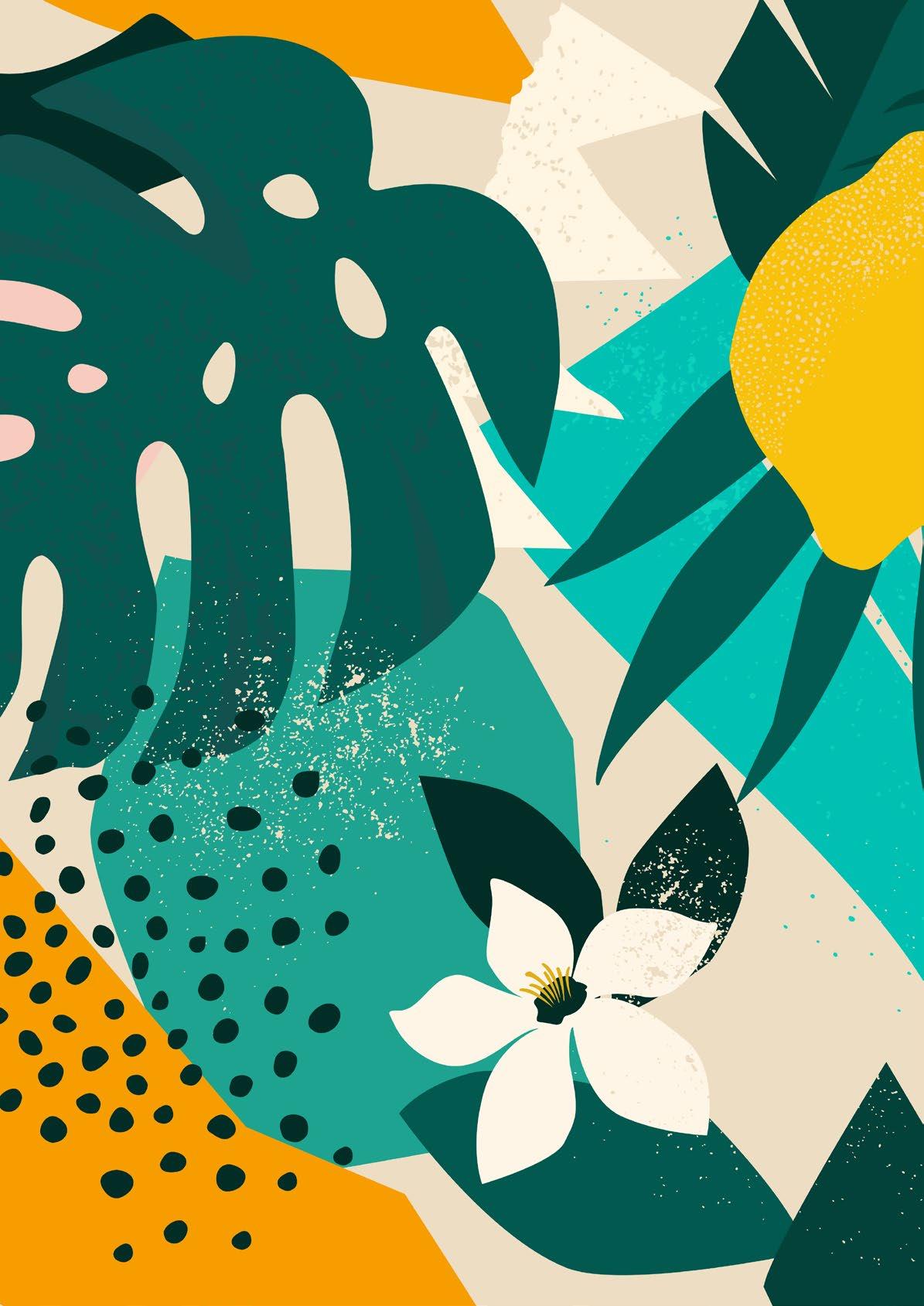
1 In this issue: The algorithm inside the bridge The larva that is good for the environment Mesolcina, the route of spices The architects in metaverses Crypto, Knowing to Invest Freight transport, the future is underground On the saddle with the Emirates The rediscovered friend 22 02 Innovation is doing new things
Start— #innovation #pinigroup#metaverse #architecture #3D #art #nft #blockchain #ticinsect #india #spices #cycling #uaeteamemirates #bitcoin #crypto #mesolcina #sustainability #abudhabi#ticino #matarsuhail #danielwiener #silviabossio #maurogianetti #ghasilalkhanna #katerynachaplynska #fabiodemartino #umbertoceccarelli #elisafilippi #christianfazio
If you have the Spotify application on your smartphone go to ‘search’ camera icon in the top right and enter the code that is found next to each article.
You can then listen to the playlist inspired by the article. All the playlists can be found at this address: https://spoti.fi/3ofTODK. Enjoy listening... and (enjoy) reading! Knowing to Invest
Impressum
Publisher Galli Group SA www.galligroup.ch
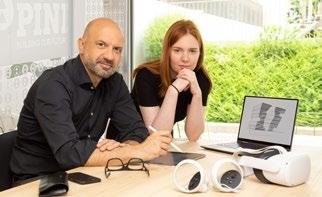
Graphic concept, (page) layout and text editing visiva.ch
For the photos, we thank: pages 2-3 and 40-43 Anya Censi page 6 Pini Group, pages 10-13 Ticinsect pages 18-21 Hsaskia Cereghetti pages 30-35 Cargo sous terrain pages 37-38 UAE Team Emirates
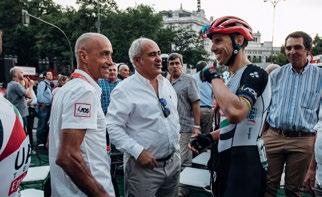
Print Salvioni arti grafiche SA
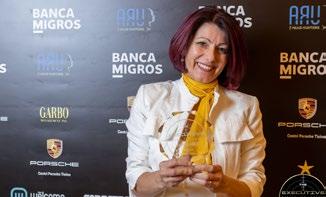

Any use of the contents (total or partial) shall be prohibited, without express consent of the publisher.
September 2022

Index 6 The algorithm inside the bridge 10 The larva that is good for the environment 30 Freight transport, the future is underground 4 Editorial 36 On the saddle with the Emirates 40 The rediscovered friend 14 Mesolcina, the route of spices 18 The architects in metaverses
24 Crypto,
Quartiere Birreria: in Italian lessons
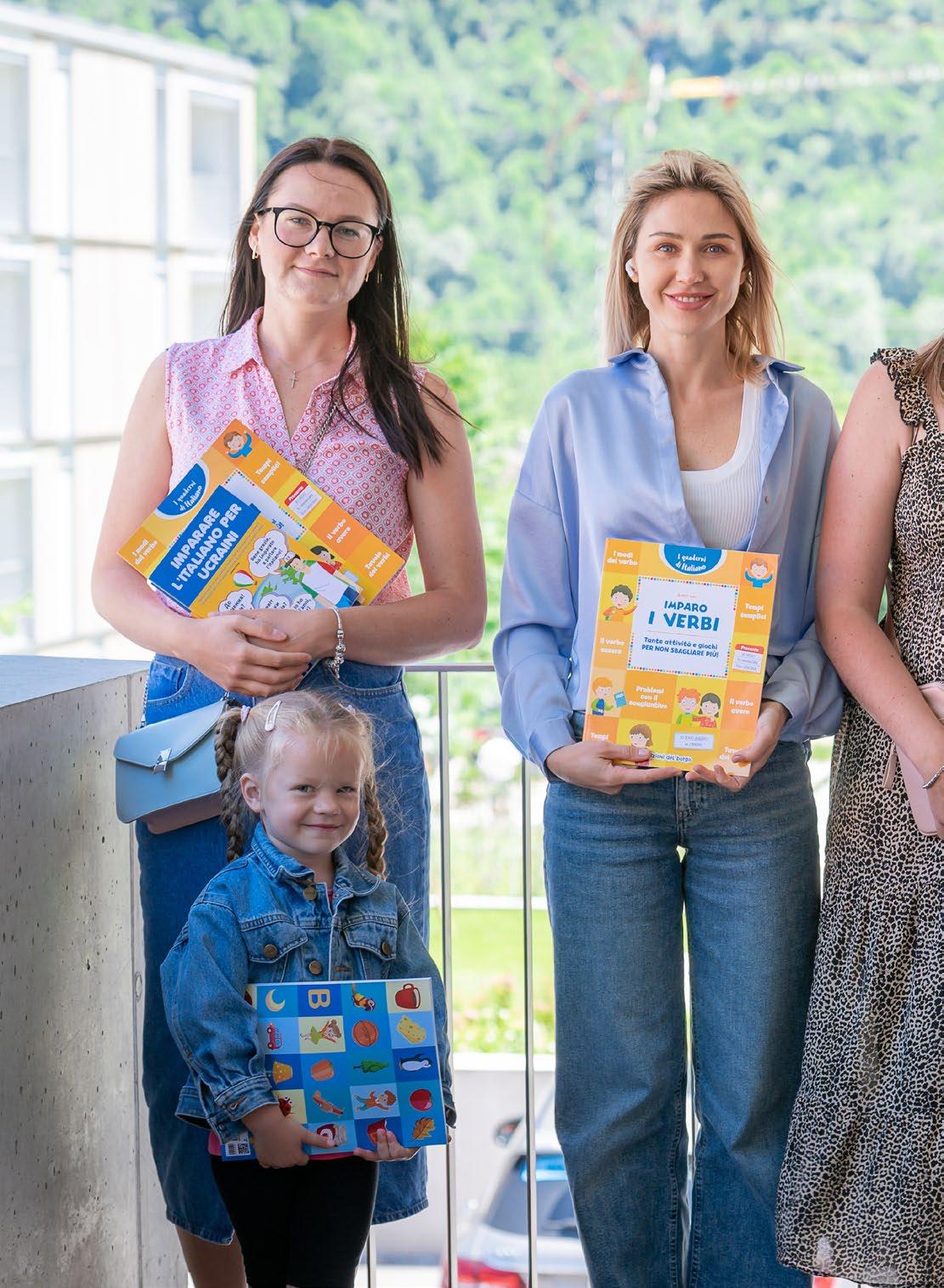
2
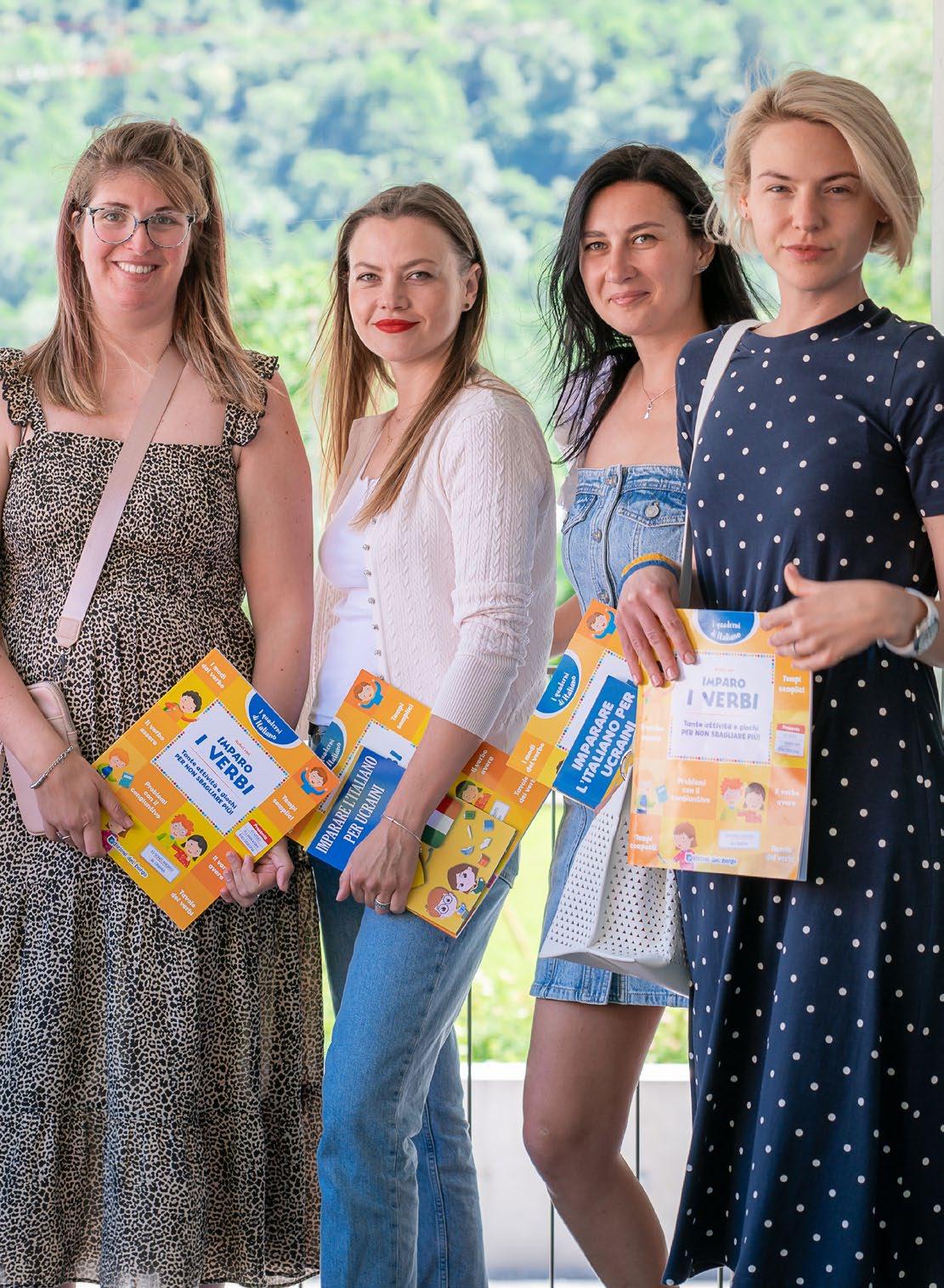 The group of Ukrainian women who fled the war who attend Italian lessons with their teacher.
From left: Iryna Lohvynenko, the little Kira, Tetiana Kotenko, Letizia Galli, Alona Balashova, Oksana Balashova, Kateryna Kolesnyk
The group of Ukrainian women who fled the war who attend Italian lessons with their teacher.
From left: Iryna Lohvynenko, the little Kira, Tetiana Kotenko, Letizia Galli, Alona Balashova, Oksana Balashova, Kateryna Kolesnyk
22 02
The difference is all here. While thinking can be instantaneous, intuitive, enlightening, doing requires time, skills and resources. This is why innovation is a journey, a journey one undertakes towards unknown lands, perhaps to discover at the end that one has succeeded in doing old things but in a new way, that one has satisfied the needs and desires that have always beat in the hearts of humans with different clothes.
“Creativity is thinking new things. Innovation is doing new things.”
4 To the readers Editorial
This edition of Bistrôt is dedicated to the theme of innovation. It is a journey that takes us into virtual worlds, those of the metaverse, created by the imagination, but which need architects to make them live able places. We stick around blockchain technology with the new currencies, the cryptos: How much do they resemble the old ones and how much do they open up new possibilities?
On our way we will meet those who want to try to innovate in taste, bringing the tradition of India within reach of the palate of those living in Italian-speaking Switzerland.
To innovate is also to rediscover a natural balance, like that of those who invest in a circular economy, capable of transforming waste into a sustainable resource, thanks to tiny allies.
There are also those who have had to face a new life thousands of kilometres away from home because their country was bombed.
In other parts of the world, on the other hand, change and innovation
seem to be the order of the day and cycling is also an opportunity to seek new paths.
In Switzerland, there are those who imagine transporting goods underground and in a totally automated way.
Finally, there are those who have made innovation a profession, from start-ups to the role of innovation manager.
In this edition of Bistrôt, you will discover that there are many roads chosen to innovate, but in all of them there is the desire to create with a purpose: that of offering the possibility of living in our world with more responsibility and in a better way. Every road to innovation is a journey without a treasure map, it is a path that is built day by day. But it is only by taking the first step that even the longest and most fascinating of journeys can begin.
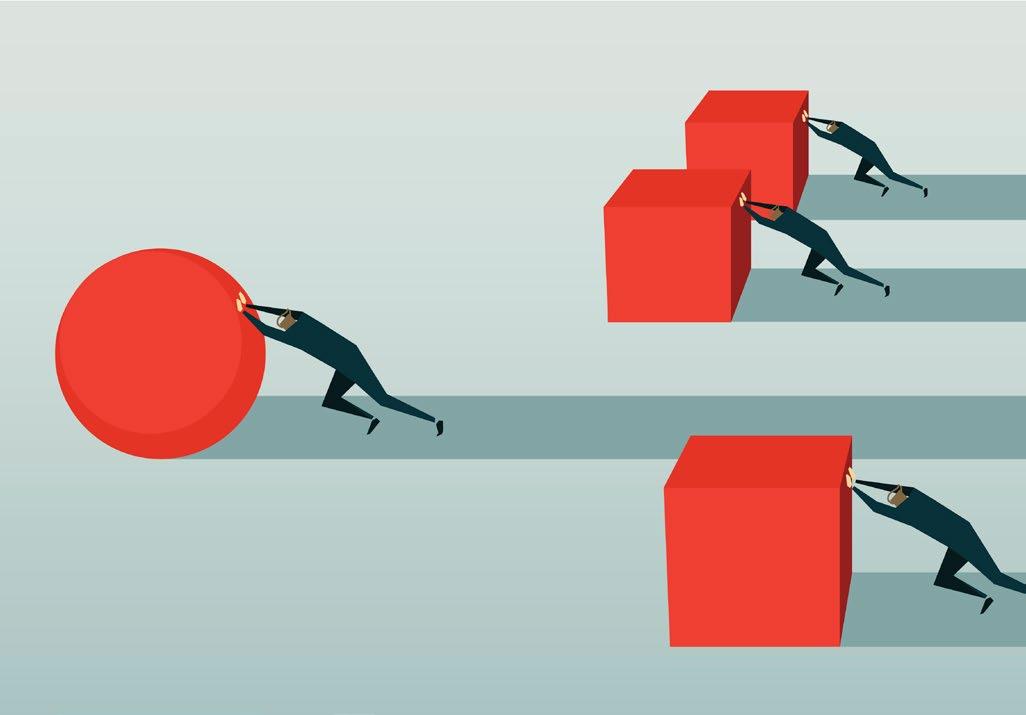
5 22 02
Download your digital copy! You can download the free digital version (.pdf format) of Bistrôt at bistrot.digital
Fabio De Martino Year of birth: 1989
Profession: Innovation Manager and Startupper
After training as a civil engineer at SUPSI and working for Pini in the civil engineering sector, De Martino completed a Master’s degree in Business Administration at Bologna Business School and a Master’s degree in Business Strategy and Management at 24ore Business School.
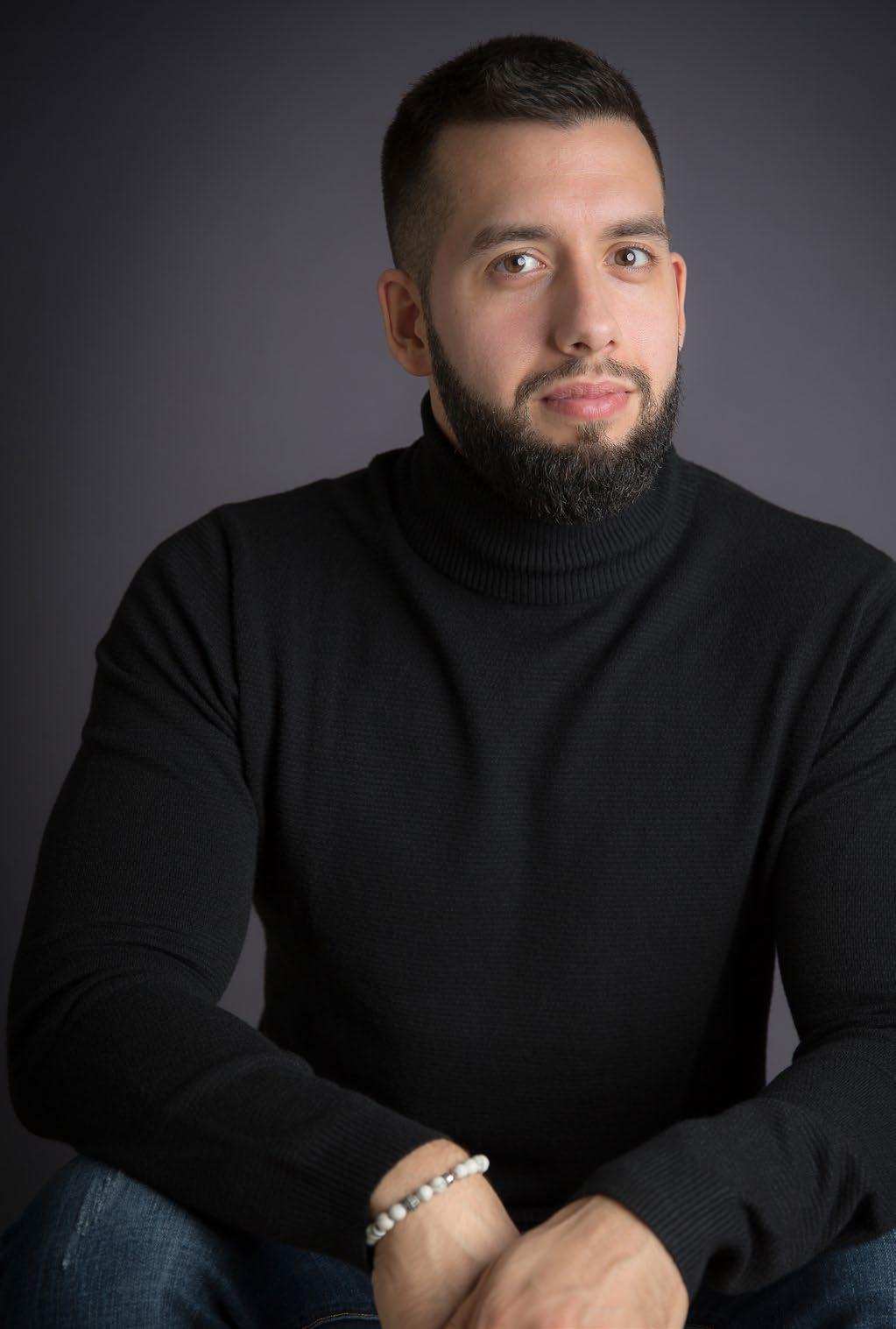
From 2014 to 2021 he worked at AFRY, with responsibilities related to the management of sales teams and the management of the first Italian branch, as co-director. In 2021, he returns to Pini with the role of Group Chief Innovation Officer.
At the same time, he has developed a strong experience in the startup and innovation world. He co-founded several start-ups, ranging from agritech to digital via foodtech. He started two incubators for innovative ideas and wrote a book, which became an Amazon bestseller in its category entitled “The Startupper’s Handbook”, written together with the founders of one of the most the important Edutech startups on the Italian scene, of which he is a partner.
THE ALGORITHM INSIDE THE BRIDGE
Why read this article?
To discover how “digital twins” are born and how artificial intelligence will innovate the world of engineering.
#innovation #pinigroup
6
Words, when they become fashionable, risk losing their meaning. “Innovation” and “innovate” are terms that fill the speeches of managers and politicians, sometimes leaving the feeling that one has the illusion that it is enough to name the words to turn them into reality.
For companies, however, innovating not only means dedicating skills and resources, but also deciding whether to play an active role in or simply suffer from changes.
The question is not whether to innovate (always necessary to survive) but how?
To try to understand the scenarios of innovation, we interviewed Fabio De Martino. Just over thirty years old, he already has a long track record of experiences in the corporate world, in the business world and in the startup world. He currently leads the Innovation office of Pini Group, an engineering company active in international design and consulting with over 400 employees.
22 02
What does the innovation manager do for a company?

“He has the burden and the honour of dealing with all the processes related to business transformation, analysing the organization and introducing, for example, new processes, new technologies, new forms of business, allowing the grounding of innovative ideas, in order to allow the company to keep up with the times. We live in an age in which the only constant is change. Innovation is the prerogative not to be overwhelmed by evolution.”
So the changes in this period are not lacking....
“Absolutely, in many areas of technology we are witnessing momentous changes. This is also happening in the engineering, architecture and construction sectors in general. Sectors that I know closely given my role in the Pini Group.”
For example?
“The examples within the engineering and construction world are many, from the role of artificial intelligence, to blockchain, to robotics applied to the construction world. Then there are immersive technologies and the whole world of metaverse.
The Metaverse will be a challenge for everyone. For example, as Pini Group we are among the first offices in Switzerland to tackle projects in the metaverse, with clients of national and international relevance who are entrusting us with major assignments.”
Will artificial intelligence also play a role in design?
“Certainly, artificial intelligence will have a huge impact on both the design and maintenance of engineering works, preventing failures and collapses of the works themselves.
Let’s take a bridge as an example. Today, we are able to create a digital
twin in 3D that allows us to perform predictive analyses useful for assessing the ‘health’ of the work. The digital twin is a highly complex virtual model that is an exact replica of the physical infrastructure. Having done this, we are able, for example, to virtually inspect the work. By combining engineering, mathematical, computer and technological knowledge, we are then able to develop algorithms, which we can feed thanks to the Big Data we collect by laying sensor networks directly on the bridge. These algorithms allow us to make predictive analyses, to understand how the bridge is behaving and how it will behave in the future, avoiding, for example, tragedies such as those that the news has often accustomed us to.”
Are these 3D models only virtual?
“The digital twin is a virtual model. But the data collected and the analyses made are also useful, among other things, for the construction of the works. The data collected allows us to understand the actual behaviour of the structures and can also be used for the construction of the works themselves, in a world that will see
3D printing increasingly used in the construction sector. Then we could have structures that are efficient, safe, made of innovative materials and perhaps even wink at the environment. In Amsterdam, the first ‘printed’ bridge is already a reality.”
Other innovative technological applications?
“Certainly, there are many technologies that will have an impact on the world of engineering and construction. However, I would like to emphasise that often innovating is not necessarily creating something disruptive. It is often the small improvements that make the difference. Sometimes, it is enough to look at things from a different perspective, from an unusual point of view. That is why it is important to let yourself be contaminated, to explore areas other than your own. This is one of the characteristics that a good Chief Innovation Officer must have.”
An example of other technological applications?
“There are so many examples we could give. In recent years, for example, drones have entered the world of
8
the innovation strategy must be done by opening up to the outside world, in an Open Innovation perspective, by pursuing partnerships, enhancing the skills already developed by others and combining them with one’s own.
A company cannot have all the skills within it. Moreover, it is important. Innovation is not something to be confined, but something to be propagated.
Synergies must be created with universities, research centres, other companies or start-ups. Contamination becomes fundamental in order to be able to implement a solid innovation strategy. In the Pini Group, to meet this need we have created, among other things, a dedicated innovation fund - pini4innovation -, with which we support innovationrelated projects and also invest in innovative start-ups and SMEs’.
Do you think there will be changes in professional skills in your sector too?
know find themselves well equipped to live in a world that no longer exists...’ Robotics will not lead to job losses as long as we think about the conversion of human labour.
Algorithms will not replace engineers, if they are able to develop the right skills, which technology cannot supplant.
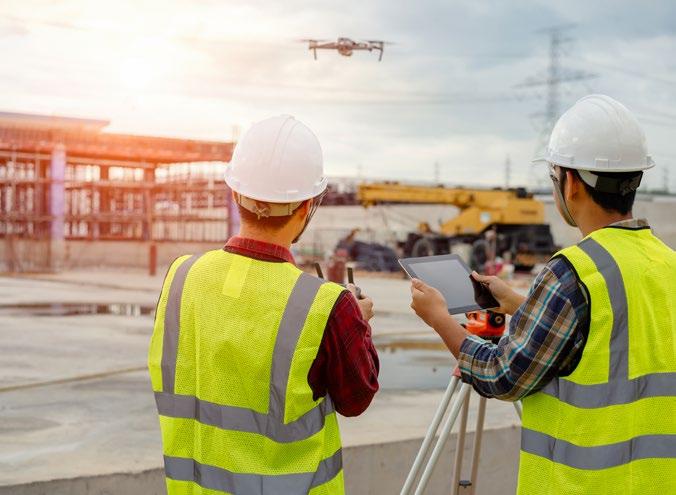
It is a matter of improving and sometimes implementing one’s skills to stay in the market, as professionals and as companies.”
Are there any trends to watch out for?
“There are so many trends. I think what makes the difference is the ability to connect the dots, the ability to go beyond one’s own sector, evaluating progress and technology with a broader perspective. This must be the ability of those who deal with innovation.”
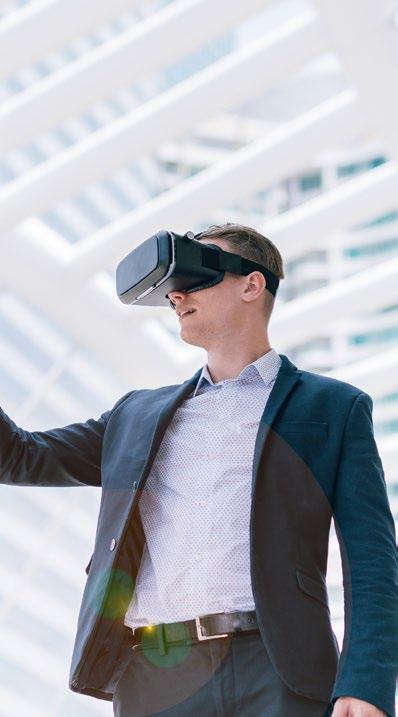
22 02 engineering and measurement.
In the Pini Group we have started to explore other uses of these technologies. Today, we also operate in the environmental monitoring sector, in the Oil & Gas sector, in the 4.0 agriculture sector and in the archaeology sector. Alongside the inspection of a bridge, we have also analysed the condition of a vineyard in the hills of the French-speaking part of Switzerland, or the implementation of pest control measures on a rye crop in the Po Valley, or the inspection of a photovoltaic park, or even a series of wind turbines.
By combining internal and external skills, in an Open Innovation perspective, we are also able to diversify the business and satisfy, even more, the customers of all time.”
Is it possible to create innovation alone?
“I think that when it comes to innovation one should never set boundaries and borders. Those who deal with innovation have the task of monitoring the trends in their sector by investigating possible futures, in order to make the best strategic decisions to address them. The concretisation of
“We start from the assumption that progress cannot be stopped. From my point of view, the subject of reskilling and upskilling must be addressed immediately.
In this regard, I like to quote an American philosopher Eric Hoffer, to whom this phrase has been attributed: ‘in a time of change, he who learns inherits the future. Those who already
The larva that is goodfor the environment
For every kilogram of animal protein produced, approximately six kilograms of vegetable protein are needed. This means that millions of tonnes of cereals and soya are cultivated only to be used in animal husbandry. The result is a consumption of land and resources.
But what if waste and organic waste could be used to feed animals? A startup from Ticino has decided to try. It was founded by Elisa Filippi, who combined
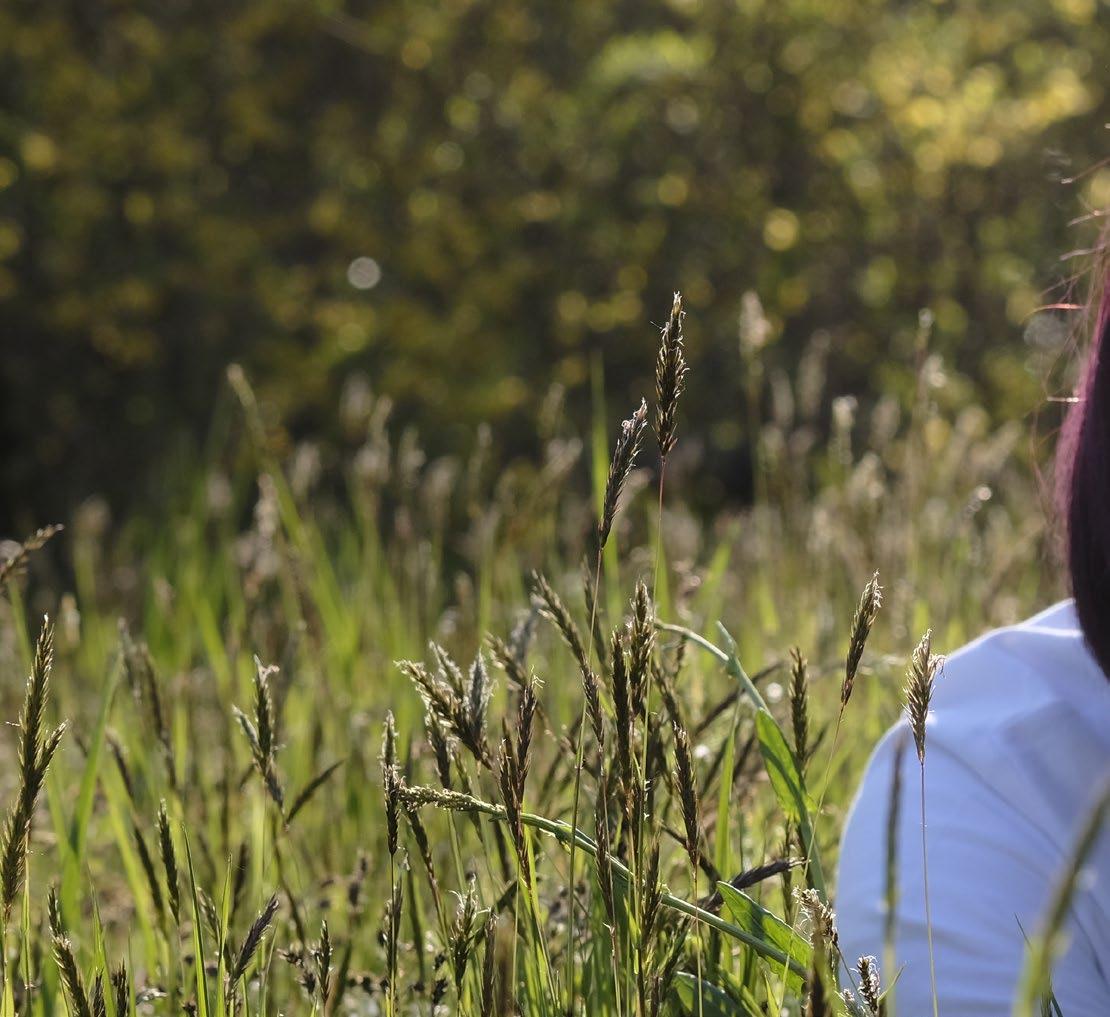
her studies in veterinary medicine with those in business administration and added her interest in the world of insects. Thus, Ticinsect was born.
An example of a very interesting circular economy model, as Filippi herself explains.
10 Why read this article? To learn about a start-up focusing on the circular economy from organic waste. #startup #environment
After graduating in Science of Animal Production in Italy (equivalent to agronomist engineer in Switzerland), she obtained an MBA at the Milan Polytechnic. In 2017, she founded the start-up Ticinsect, which in 2019 became an entrepreneurial reality committed to experimenting with solutions for the production of insect-based animal food fed with organic waste.
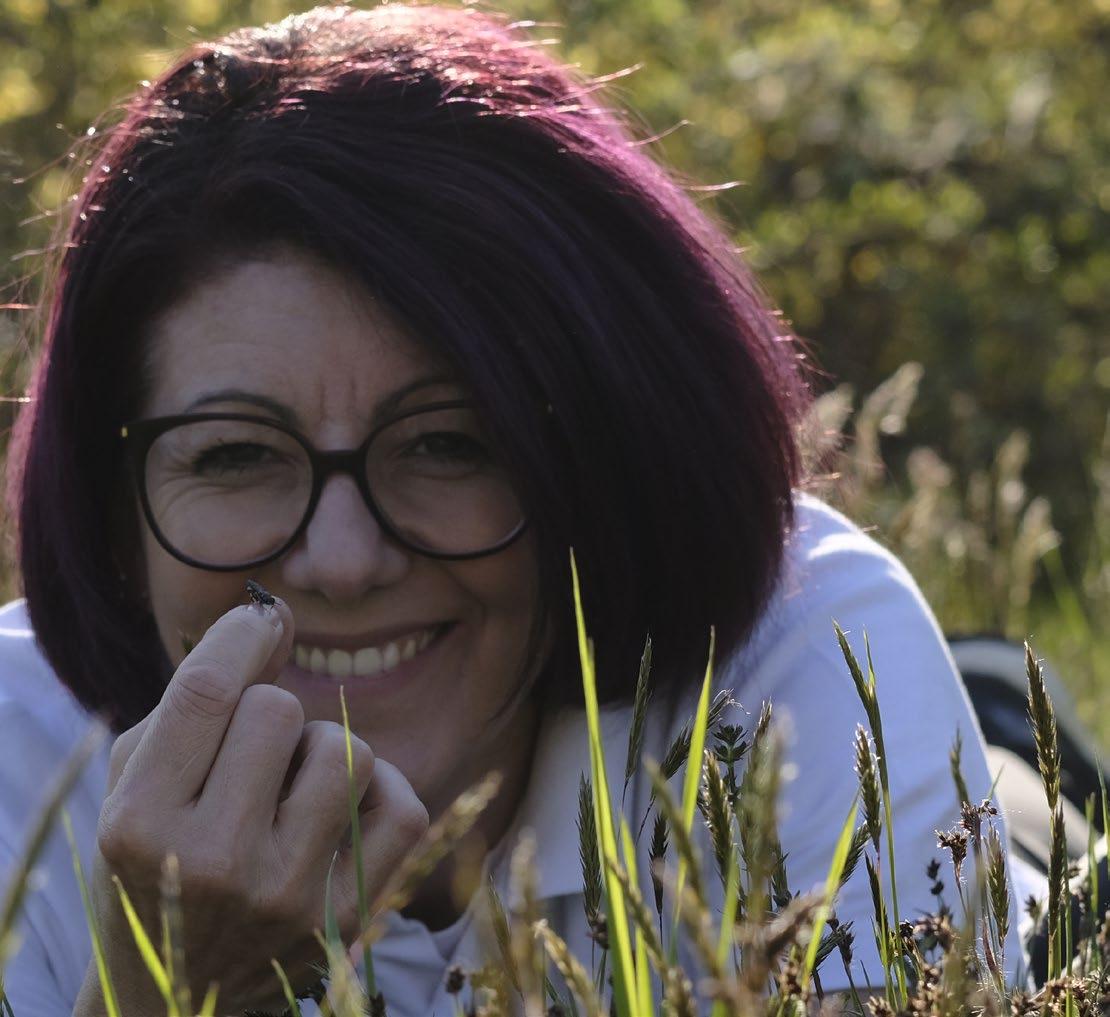
The Hermetia Illucens or soldier fly is a dipteran insect (i.e. with only one pair of wings) that reaches a maximum size of two centimetres. It is predominantly black in colour, with metallic blue to green highlights. It lays eggs about 1 millimetre long that hatch after about 4 days. The larva in the early stages is 1.5-2 millimetres long but develops rapidly to 25 millimetres in a couple of weeks.
They are considered useful as they initiate the decomposition of organic matter and, in connection with their rapid development and voracity, have been tested in organic waste disposal trials. In forensic medicine, the species is used to estimate the time of death and obtain information on the place and circumstances of death. In relation to the high protein content of the larvae, they are used in animal feed when reduced to meal.
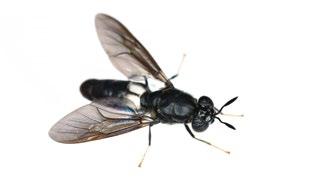 Elisa Filippi Year of birth: 1974 Profession: entrepreneur
Elisa Filippi Year of birth: 1974 Profession: entrepreneur
22 02
What is Ticinsect’s project based on?
“We use a particular larva, the larva of the soldier fly. Its scientific name is Hermetia Illucens and it is known as the black soldier fly. It is native to America, but has long since spread to other continents, including Europe and Switzerland.”

What is its characteristic?
“It feeds voraciously on organic substances, eating up to four times its own weight in a single day. We can call it a healthy insect, as it does not carry diseases and is not invasive.”
What do you get from these larvae?
“Protein flour and an oil rich in fatty acids. Both can be used to feed animals, both farmed and pet animals.”
And what do you feed the larvae with?
“They could eat almost all kinds of organic waste but, on a legislative level, but since the purpose is to produce flours that enter the food cycle, it is not allowed to use kitchen waste, to understand what first ended up in our dish. But you can use all the waste from the food industry and agriculture, in
addition to the unsold food of the large distribution. Even the so-called ‘green’ can be used with a lower yield but still good. These are wastes that are currently a disposal cost. In some cases, in Ticino, we also get to confer outside the canton because the plants are not enough. Instead, with our system, they can be completely recycled.”
Because of the larvae?
“Yes, the waste is shredded and placed in special boxes, about 60 x 40 centimetres in size, and the larvae are placed there. Within two weeks, only the larvae and the fertiliser remain in the box.”
What is the surrender?
“It depends very much on the percentage of moisture in the waste. A reliable estimate is that from 100 kilograms of organic waste, you get 20 kilograms of fertilizer, 10 kilograms of protein flour and 3 kilograms of oil.”
So about two-thirds of the weight disappears?
“Exactly. You lose the water contained in the waste. No other technology has such an ability to reduce biomass.”
The concept of a circular economy is fully respected.
“Yes. We produce the eggs, the larvae, collect the waste, process it and give it back in the form of fertiliser and food to the agricultural sector. There is no shortage of market because most of the larvae is then used for the extraction of these valuable components, while a small part is used to produce more eggs to reform the colony. The system is perfectly circular because everything is reused and nothing
12
is discarded. Our system feeds the animals with soya and fish meal and producing it creates conflicts with the management of resources for human food. Our process, a closed loop, does not consume raw materials but makes the most of the waste. Moreover, the oil extracted from the larvae can also be used as a biofuel.”

Where will your first plant be located?
“We will open our first industrial plant in Biasca, in the Leventina Valley. We have acquired a building with an area of 3,000 square metres and will start semi-intensive production.”
When will the first productions take place?
“We will start by 2022 with the manual line, while the automated line is scheduled to start by the end of 2023.”
When fully operational, how much waste will you dispose of?
“We aim for at least 5,000 tonnes per year.”
Have you found interest from investors?
“Yes, because we expect a return on investment in a relatively short time frame of 3-4 years.”
Is this a model you consider replicable?
“Our goal is exactly that. The type
of solution we have adopted fits well with a zero-kilometre philosophy. Unlike large centralised plants, which have to move hundreds of lorries several kilometres to deliver waste, a plant like ours can be built close to medium-small realities, such as farms, food production that produce this type of waste, and livestock farms that have an interest in exploiting their waste and using our products: it is a matter of creating a network of virtuous actors actively committed to sustainability. Furthermore, due to the small size of our solution, it does not require or impact particularly on landscape and urban planning. It is a model that fits very well with the territorial characteristics of Switzerland and the Alpine areas.”
Could it have been done earlier?
“I remember that when I was at university, more than 20 years ago, it was already known that we could not continue to produce food as we were doing, which is why I have always been interested in the world of insects, they have long been studied as possible resources for animal production. The problem is that time has been wasted over the years, only since 2017 has it been possible to market insects for food purposes.”
13 22 02
Mesolcina, the route of spices

Innovating can also mean taking tradition and making it known to those who do not know it. Because what is familiar in some places may be exotic in others. Curiosity and the desire to experiment are, after all, at the basis of every new growth path. So it happens that in Grono, a small town in the Moesano, in the Italian Grisons, amidst Alpine panoramas, one can enjoy dishes coloured by
the spices of the Orient. Add to this the fact that the Indian restaurant has found a place in the village’s historic hotel, and the desire to know more increases. To do so, we interviewed Ghasi Lal Khanna. He left India almost 30 years ago and has since toured Switzerland and its restaurants, discovering the secrets of hospitality.
14
Why read this article?
To learn that curry does not exist in India, but there is an Indian restaurant at the foot of the Alps.
Cumin
Its seeds are similar to those of fennel. Apart from being useful for flavouring dishes, cumin is believed to aid digestion and has antiinflammatory activity. It is rich in iron and antioxidants.
Coriander
Both the leaves of coriander, which are spicier and more popular in the East, and the fruits, which are
pepper-like, yellow grains with a sweetish flavour reminiscent of lemons, are used.
It is believed to be a good natural remedy for abdominal colic, digestive difficulties and bloating.
Turmeric
The spice is obtained from the roots of the plant, which are boiled, then dried and finally crushed to a yellow ochre powder.
The plant has always been known for its purifying, bile-stimulating and fluidifying action. Recent studies have found that curcumin can block the action of an enzyme believed to be responsible for the development of several types of cancer. It also has an antiinflammatory and analgesic action. It is a powerful antioxidant and also has a healing effect.
 #indiancuisine #curry
#indiancuisine #curry
The 3 Cs of spices
Here are some of the main spices used in Indian cooking.
Originally from the Indian state of Rajasthan, in the north of India. In 1995 he moved to Switzerland. He currently lives in Locarno, but has worked in the restaurant industry in a dozen cantons. At the Hotel Calancasca, he has opted for a cuisine entirely inspired by the culinary tradition of India.
Where are you originally from and when did you arrive in Switzerland?
“I am originally from North India, from Rajasthan. When I was 26, in 1995, I came to Europe. In Switzerland I worked as a waiter and in catering in about ten cantons. By now I know not only the languages but almost all the dialects. Five years ago I had the opportunity to work in an Indian restaurant beyond the Gotthard and I thought that Italian Switzerland lacked this offer.”
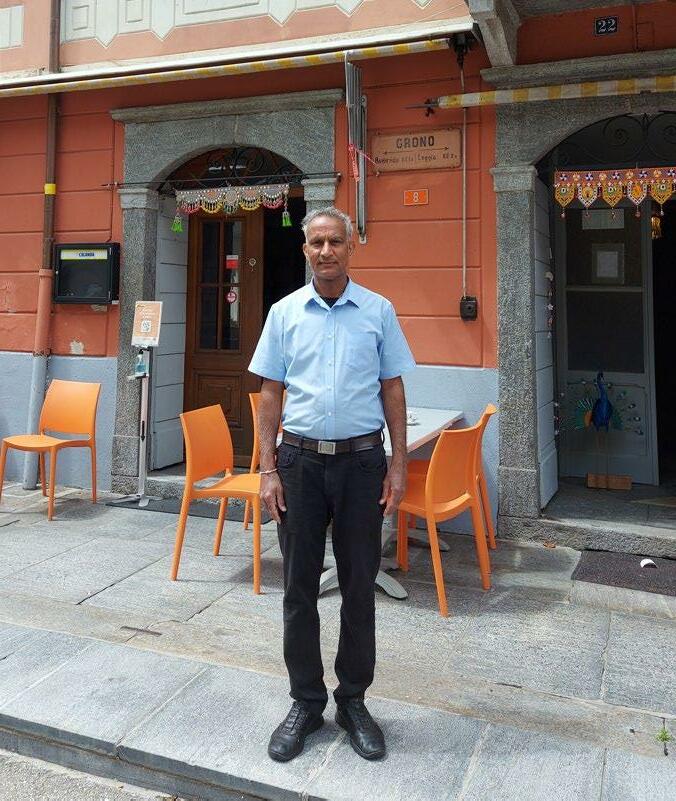
A restaurant that only offers Indian cuisine?
“Yes, some restaurants do fusion
cuisine, you can also find some Indian-inspired dishes there, but it is not the same.”
Why?
“Because it is Indian cuisine as a whole that is healthy. Our cuisine uses the same spices that are used in traditional Ayurvedic medicine. That is why it is very balanced and has no side effects.”
What are the main dishes?
“First of all, it should be pointed out that we offer North Indian cuisine.”
What is the difference?
“In the North we accompany our food with chapati, a bread made of wholemeal flour. In the South and East, we eat more rice and fish.”
Is it a vegetarian cuisine?
“Not totally, but basically Indian cuisine is. Eighty per cent of the population is Hindu, of which 60 per cent are vegetarians.”
What meat is cooked?
“Goat and lamb mostly, chicken to a lesser extent. Buffalo is eaten by Muslims.”
Is Indian cuisine a street food?
“Until a few years ago, there was no culture of going to restaurants for dinner. You only went to restaurants if one was travelling, if one was going to another city. In recent years, people have also begun to appreciate going out to dinner in the places where they live to try new culinary novelties.”
Who do you have at the cooker?
“We have a professional chef from India who has been a chef in Europe for several years. He was in Switzerland for a long time, then
Ghasi Lal Khanna
Year of birth: 1969
Profession: restaurant manager
16
he started a family in Portugal and now he is here with us. Having a professional chef is important, it is not enough to be Indian to know how to cook Indian.”
Do the Swiss appreciate the flavours of Indian cuisine?
“I usually start by proposing appetisers like onion bhaji, pancakes made of chickpea flour and onion, which I Italianise as ‘onions’. When I mention onions everyone thinks they are heavy, I say try them and they are never disappointed. We serve them with tamarind sauce, yoghurt and mint.”
Are there some false myths about Indian cuisine?
“Curry does not exist here, in the sense that curry is a mixture of spices and each family or restaurant has its own combination. We also have our own, we get our spices directly from India. Also, many people think our cuisine is spicy, instead it is savoury, those who overdo the chilli do not know the real Indian cuisine. Finally, we dine on water. Some restaurants offer yoghurt and mango shakes with spices. With us it is instead a digestive drink, for after the meal, otherwise you risk becoming heavy and covering up the flavours.”
ONION BHAJI (ONION PANCAKES/ FRITTERS)

Ingredients
120 g chickpea flour - 2 onions (large, sliced) - 1 teaspoon coriander - 1/2 teaspoon turmeric - 1 tsp cumin 1 or 2 teaspoons chilli powder (or a few chopped green chillies) to taste water according to the density of the mixture to taste salt and pepper to taste oil (for frying)
Preparation
Place the sifted chickpea flour in a bowl, together with the onions and spices, season with salt, pepper and stir, then leave to stand for 20 minutes. After this time, squeeze the onions to release the water. This liquid is usually sufficient. However, if you think the batter is too dry, add a teaspoon of water at a time and mix with your hands until the batter is blended with the onions.
Heat the oil in a large pan and fry the mixture in small amounts at a time, it will take about 3 to 4 minutes to get the fritters nicely golden and crispy. Enjoy them hot.
17 22 02
Year of birth: 1972 Profession: architect
After graduating in Architecture from the University of Venice, he worked on building design in a number of studios in Milan. For the past 13 years, he has been working in Switzerland, and at Pini he has been particularly involved in Bim and 3D design. Today he holds the position of Virtual Design and Construction Manager.
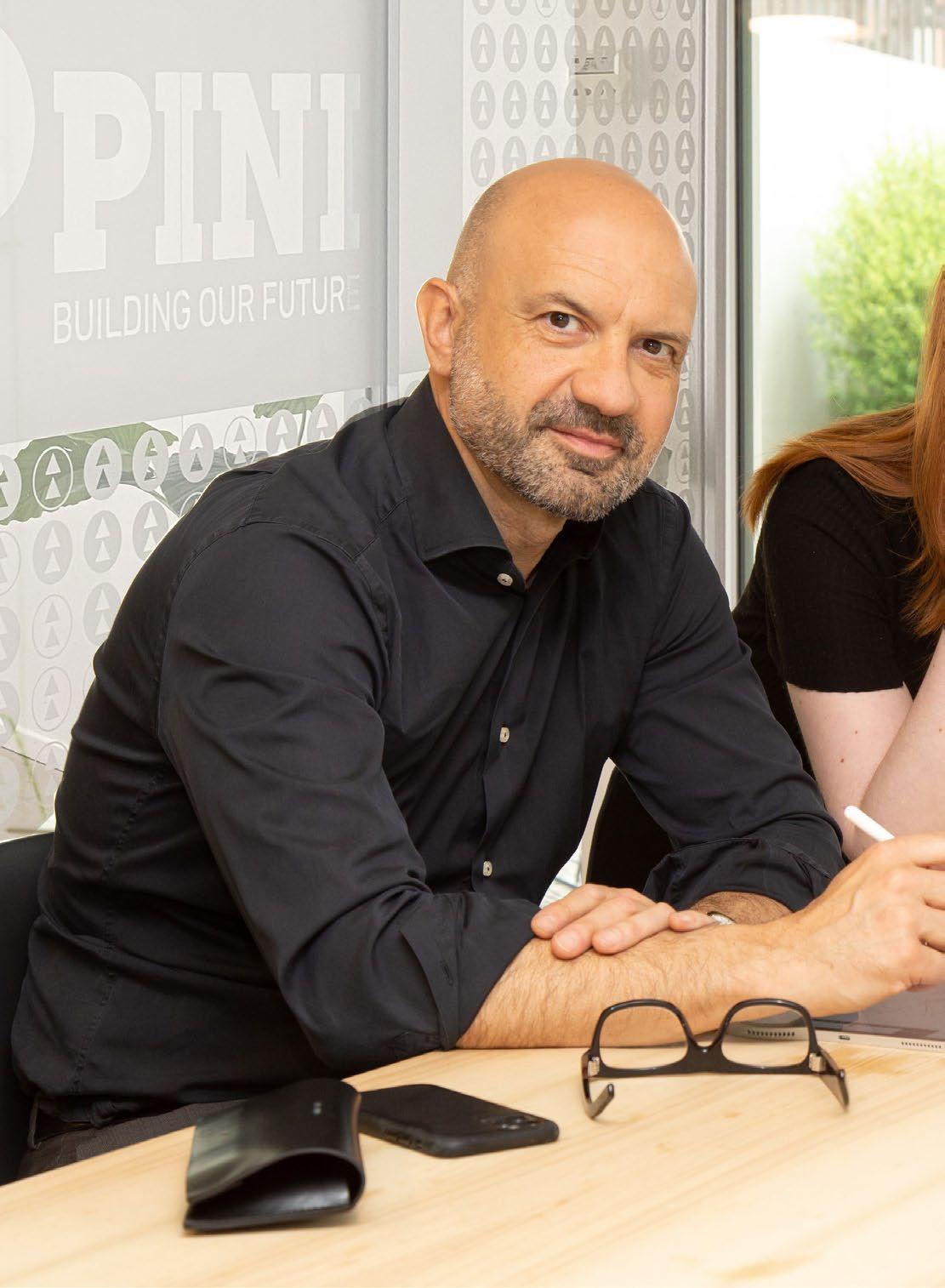 Kateryna Chaplynska
Kateryna Chaplynska
Year of birth: 1997 Profession: architect
Graduated in Architecture in Kiev, after an experience in a medium-sized company in Ukraine, since March 2022 she has been in Switzerland and is employed at Pini working on design in the metaverse.
Umberto Ceccarelli
18
Why read this article?
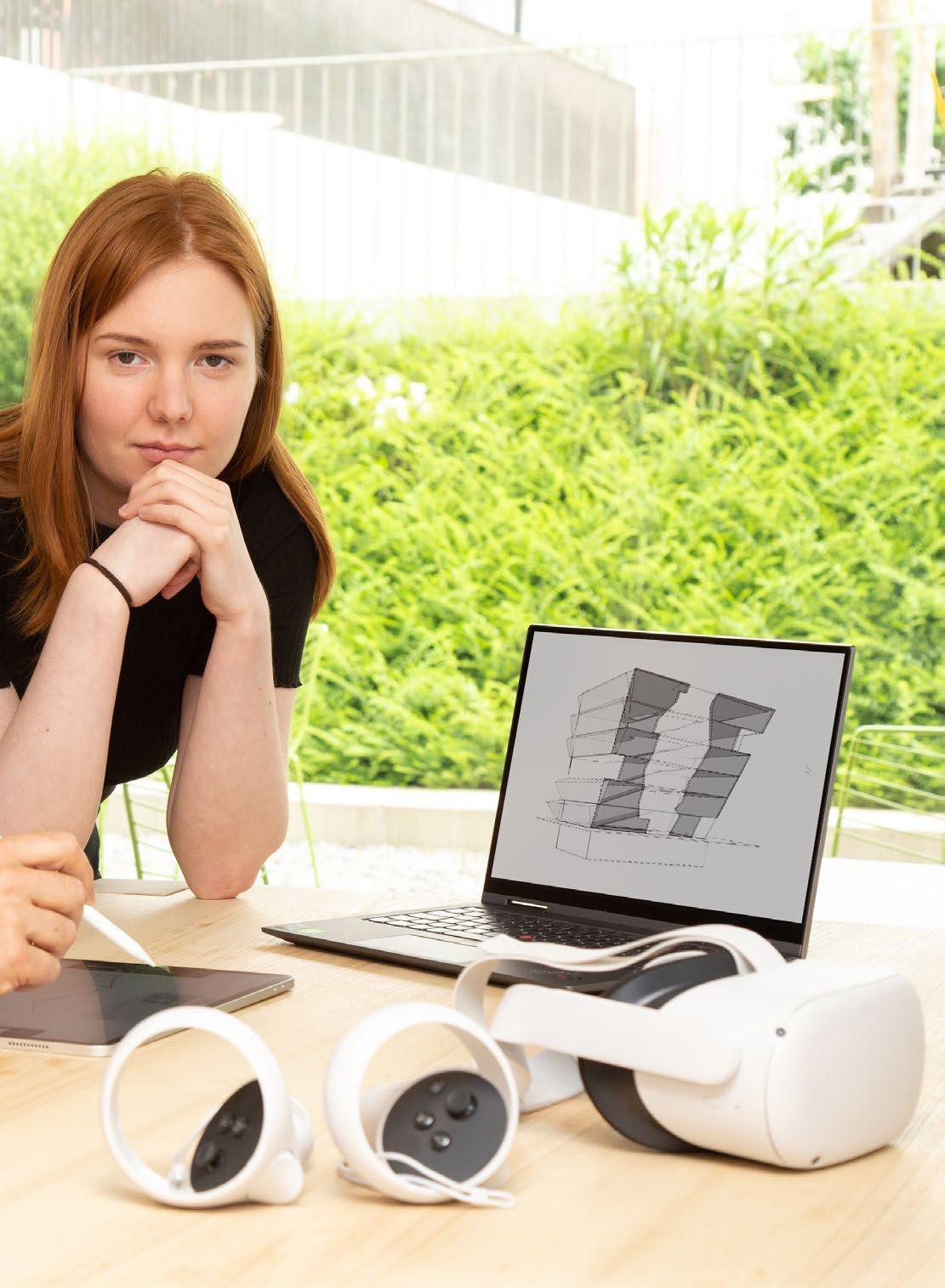
To reflect on the architecture of virtual cities. To find out whether, even in the metaverse, we still need doors, roofs and beauty.
#metaverse #architettura
THE ARCHITECTS METAVERSES
22 02
IN
What are metaverses?
We have heard about them on TV, read the headlines, commented on the tweets and shared the posts. Few of us, however, have had direct experience. For most people, the word ‘metaverse’ evokes an aesthetic somewhere between the world of video games, science fiction films and cyberpunk culture.
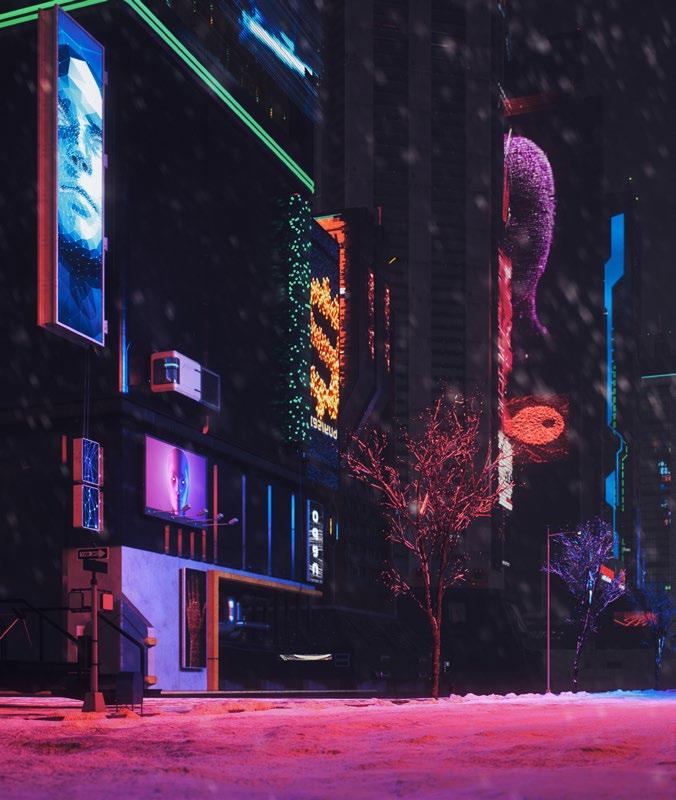
Yet the metaverse will shape society and the economy in the near future. According to a recent report by Citigroup, the New York banking giant, the ‘metaverse economy’ could be worth up to 13 trillion dollars by 2030. The easiest way to explain what a metaverse is to imagine it as a city.
A place where you move around, form relationships, enter clubs, window shop, study, do business and listen to concerts. The difference is that we dress with an avatar (a digital character that we want to represent us) and the look is not a function of the weather but of how we want to show ourselves. In the metaverse, there are those who just
take a tour (the guests), those who have credits to make purchases (there are blockchain-based and cryptocurrencies) and those who, finally, own a plot of virtual space. The plots are limited and there are rules on how and what can be built on them. That is why these worlds, founded mainly by groups of programmers from the world of games and inspired by an ideology based on decentralisation, need architects. They need them to be not only places of fantasy, but also spaces that can be lived in and inhabited by millions of people. Umberto Ceccarelli and Kateryna Chaplynska work for Pini Group to design in the metaverse and tell us about their experience.
What is the difference of designing and building in the metaverse compared to other virtual worlds?
Ceccarelli: “They are an interactive social-economic and cultural space that persists even when users leave the programme. Each metaverse is unique and autonomous in its constitution. The virtual inhabitants themselves collaborate in its cogeneration and thus create new and innovative social dynamics of the built environment. Compared to social networks, the big difference is this: being founded on a structure based on blockchain technology, so each metaverse cannot be duplicated and what happens in it cannot be deleted, in the sense that a trace of the operations we perform remains.”
Are we talking about a finite world?
Ceccarelli: “Not in all metaverse the number of plots is finite, only in the main ones where the real estate market is developing, for example Decentraland. In general, we are dealing with NFT objects, unique objects that cannot be replicated.”
What do the cities of the metaverse resemble?
Ceccarelli: “If we had to make an urban planning comparison, we can think of American cities that have sprung up from nothing, or of Dubai, where the buildings have an essentially attractive
If we had to make an urban planning comparison, we can think of American cities that have sprung up from nothing, or of Dubai, where the buildings have an essentially attractive character
20
character and where the formal aspect wins out over social and cultural interaction. In these cases, a designer, an architect by training, can make a difference to the vision that game designers have. In video games, the experience to invest in is to push the user/player to capture and not to be captured, to have a mission to fulfil.”
So what is the element that metaverse founders usually do not take into account when designing?
Ceccarelli: “The big challenge is to offer the duration of the experience. In the metaverse you move very fast, you find it hard to stop, it’s as if when faced with a new world you want to explore as much as possible. In the real world, on the other hand, we are dealing with places designed for the duration of relationships, to facilitate encounters, just think of squares, parks. The metaverse is not a virtual reality in which I enter, look and leave. Instead, it is based on interaction: from education to business, but also in terms of artistic and cultural exchanges. For example, there are universities that hold lectures. Therefore, it is necessary to understand these dynamics and design places that offer pleasant experiences, that invite people to
come back. They must not only have the ‘wow’ effect, the effect of surprise.”
What constraints are there in the design?
Ceccarelli: “As I said, first of all, you have in most cases a limited space, a parcel of land and where there is limited property, of course there is speculation. Since October 2021, land prices have risen dozens of times. Depending on the location, there are plots of land worth a million Francs.”
Chaplynska: “The presence of planning restrictions is very interesting and challenging. For example, elements called polygons are used to build. Each polygon has its own cost, so it is a challenge to be able to build beautiful and functional things using only a certain number of polygons. It is a bit like in the real world with raw materials.”
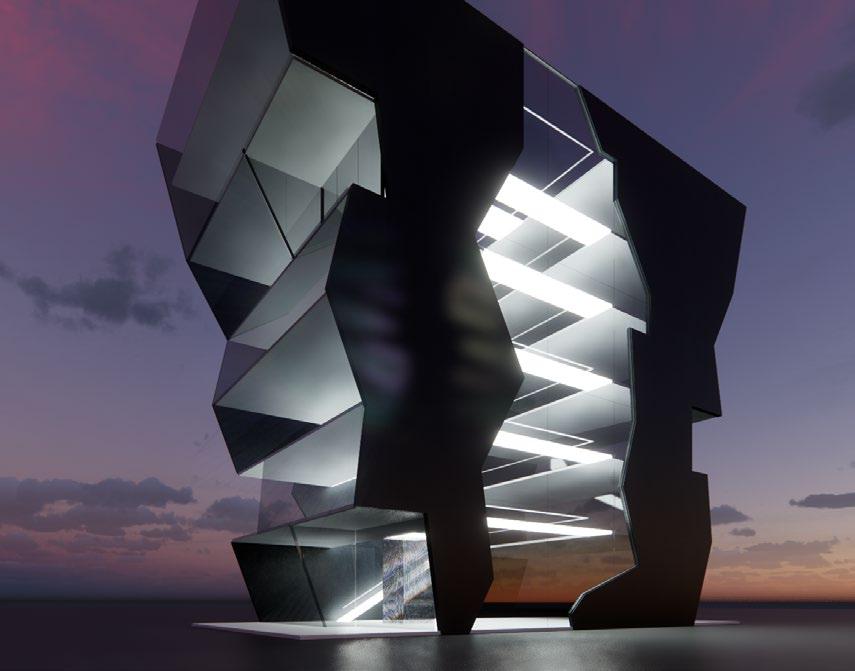
What changes from a structural point of view?
Chaplynska: “In most cases you start with the rules of reality, you almost always find doors and other architectural elements that invite you in. Then there are those who have less architectural culture and turn buildings into a kind of sensational
Art gallery project in Decentraland carried out by Pini Group
21 22 02
chamber of wonders. For example, a roof does not serve its function. There is nothing that risks getting wet. But there is a tendency to replicate environments that have familiar elements.”
What are the most interesting metaverses?
Ceccarelli: “In Switzerland today, investments are mainly in Decentraland, The Sandbox and Cryptovoxels. For instance, some of the big names have already invested in them, replicating their locations. Anyone with a minimum of computer skills can create a metaverse; dozens of them are born every day. We cannot know today who will establish and last. There will be a selection as there was with the internet in its early days. Probably the real boom will come when Meta, the Facebook company, launches its Horizon Worlds metaverse on a large scale. When it becomes an experience that you can access from your smartphone, everyone will want to enter.
Many associate the metaverse with virtual reality, is that so?
Ceccarelli: “The metaverse is a form of virtual reality. But if by virtual reality we mean the immersive experience one has with a visor such as Oculus, it should be pointed out that all metaverses are primarily usable from web platforms, hence from any laptop. Indeed, the blockchain technology that underpins metaverse does not always interface easily with the technology used by virtual reality viewers. Many think of films like ‘Ready Player One’, with a hyper-connected humanity, living in a reality of degraded suburbs and spending time with a visor over their eyes in a virtual world with their avatar. It is an idea of the metaverse that can generate resistance when it comes to investing or designing in the metaverse. Today, metaverses are instead something else, they are opportunities to interact with real content. For example, a way to do professional training even with very large teams.”
What are you currently doing in the metaverse?
Ceccarelli: “We partner with a company that specialises in scouting, i.e. finding land in the metaverse, and implementing the software. We offer the architectural design part. In addition to building the headquarters of the Pini and Galli groups, we are following projects in the field of sport and the creation of an art gallery.”
What do art galleries sell in the metaverse?
Chaplynska: “They sell NFT (nonfungible token, ed) works. This blockchain-based system guarantees the ownership and authenticity of an asset.”
How are art galleries structured?
Chaplynska: “Like a real exhibition space, the aim is to have well-lit spaces, to provide an experience of liveability and of the pleasure of encounters.”
Are sellers real or virtual?
Ceccarelli: “Currently in the metaverse it works more or less like in non-virtual reality, if you want to meet people to do business you make an appointment or attend a scheduled event. Or there are opening hours. The difference to the physical world is that you meet between avatars.”
No handshake
Ceccarelli: “In the multiverse we take on the appearance of cartoon-like characters, who can also be superaccessorised and with these skins, i.e. clothing, we also meet for professional reasons. Undoubtedly, one of the factors to be evaluated will be how this ludicisation of experience and encounter with others will influence socio-economic relations.”
22
MAIN METAVERSES
Decentraland
Founded in 2017, the company launched its Metaverse platform to the public in 2020. Users can create content, interact with each other and earn money, mainly through investments in non-fungible tokens, VR real estate and other digital assets. The platform is fully decentralised and operates via its own cryptocurrency called Mana registered on the Ethereum blockchain. It is a favourite among large investors, corporations and governments.
The Sandbox
Sandbox is a gaming environment where users can create games, participate in events, navigate VR worlds using maps and purchase land, similar to Decentraland. Its cryptocurrency token called SAND. Lands can be rented for events whose participation requires an admission fee, or merged to create a district to attract more paying users.
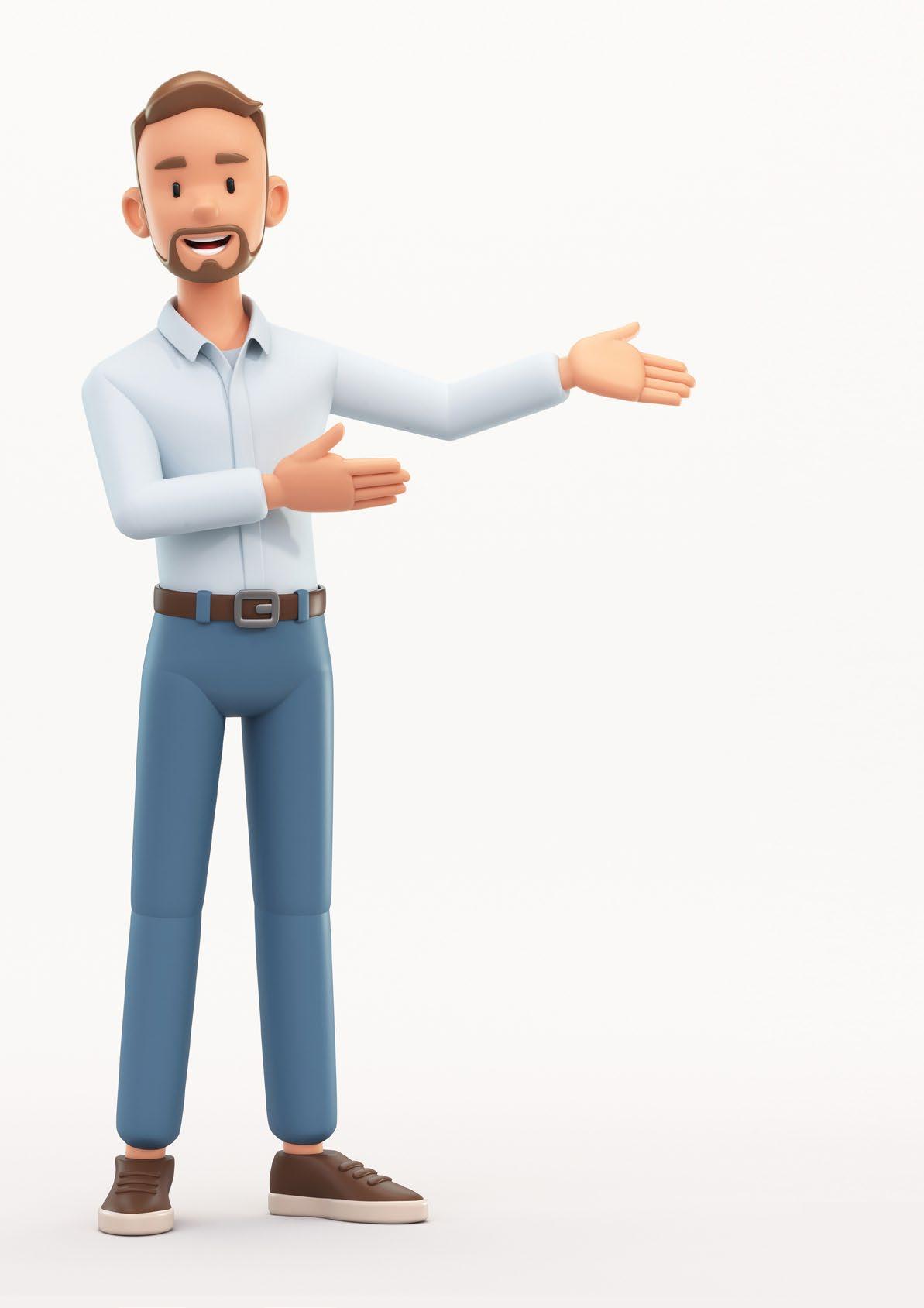
Cryptovoxels
Cryptovoxels is a Metaverse platform built on Ethereum’s blockchain protocol. It is compatible with Oculus Quest, Oculus Rift and HTC Vive VR support.
Origin City is an ‘island’ where you can interact with other avatars and the plots of land on which you can build are called ‘parcels’. By means of the ‘voxel’ building element, shops, buildings, infrastructure can be erected.
Somnium Space
Somnium Space was in fact the first metaverse to enable a built in experience that can already be experienced with VR viewers. It works on the Ethereum Blockchain and has its own native cryptocurrency The Somnium Space Cubes (CUBE).
Why
CRYPTO, KNOWING TO INVEST

24
read this article? To find out how the world of cryptocurrencies works. To find out what blockchain, Dao, Defi and, of course, Bitcoin are. #blockchain #cryptocurrencies
The world of cryptocurrencies, like Bitcoin and its sisters altcoins, is divided between those who grew up on bread and computing and see in these decentralised coins a shared finance management system and those who approach them because they hope to make big gains by in-vesting in projects that can increase in value in a short time.
Investing in cryptocurrencies remains a high-risk choice. To better understand the dynamics of this sector, the advice is to study, under-stand the mechanisms behind blockchain, how smart contracts are composed, etc.

We interviewed her.
How did you approach the world of Bitcoin?
“My path is particular, it all stems from a curiosity to understand and go beyond. It all started during a computer class, the professor had told us about the dark web and after several attempts I managed to enter the ‘parallel’ internet. I began to wonder why I couldn’t use Euros in the various markets available, I later realised, perhaps too late, that Bitcoin was and is also a form of communication. Between unfounded research on the subject except for a few poorly formatted forums and help
from users I found on the net, I decided to buy just a few from the person who had helped me. With hindsight, there remains a bit of bitterness in my mouth, I admit.”
Did you start in the crypto world straight away?
“No, especially in the beginning I made a lot of mistakes that led me to neglect the topic, I could name a series of endless nonsense that translates into: by making mistakes you learn. Then in 2014, I realised that more and more people and companies were taking an interest in the subject, even
Silvia Bossio, who has been involved in the ‘crypto’ market for a few years now and has been increasingly committed to creating communi-ties that can compare experiences in the sector, tells us this.
22 02 01
Silvia Bossio Year of birth: 1991 Profession: Crypto Surfer
She was one of the first women in Italy to follow the technological wave of the Blockchain and Bitcoin.
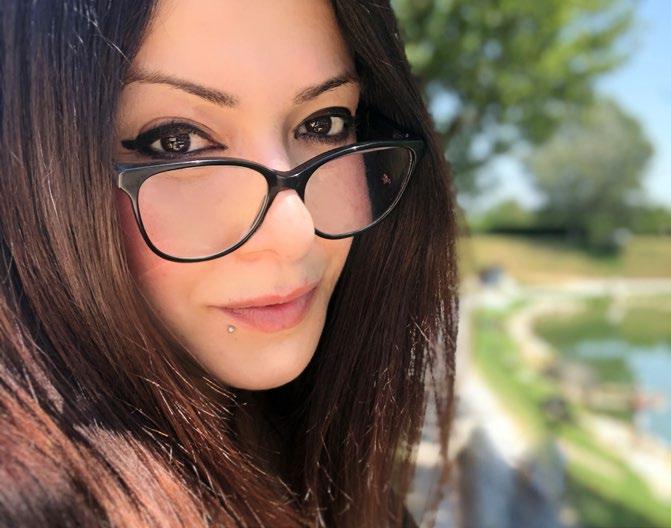
Thanks to her dissemination through blogs, social networks and com-munities, she has become a point of reference for industry insights.
Founder of The Timist, and Co-Founder of Crypto Bar, where the aim is to inform in a simple way the technological and financial aspects of the cryptocurrency industry.
Since April 2020 he has been community manager of Seed Venture, Chief Operative Officer of the exchange Chainblock since March 2021.
In 2022, she also approached short films, joining the WFSC (WeShort Film Selection Committee).
in Italy. I had created a blog that now, after three rebranding’s, has taken the name “The Timist” and vertically follows industry news. In 2017, the Crypto Bar community was born, a sort of digital bar where we often talk about new more or less innovative pro-jects, test platforms and share feedback even live. It’s always better if accompanied by a good red wine! I believe that in this market it is essential to share experiences, exchange opinions, create something useful and be of support to other people as well.”
Is the crypto world a world of speculators?
“I would say that it is clear that 90 per cent of people who invest in cryptocurrencies do so because they hope to quickly increase their capital. It may be right or wrong, who can say, but from experience, including personal experience, I can say that being a high-risk market - I am not talking about Bitcoin, but mostly about altcoins and the lack of knowledge of the instruments - the possibility of getting hurt is high, without a minimum of founda-tion or culture on the subject.”
Cryptocurrencies were born with an anarchic ideal, however, many projects today are centralised?
“The world of decentralised finance, which wants to dispense with banking groups through automated forms of management, with blockchain
technology at its base, has great possibilities that are being created. Sometimes, how-ever, projects are often governed by companies instead of being de-centralised and 100% distributed with open source technology. The technology can also be used to create centralised products, states and corporations have the resources to do so and are already doing so. They have already started talking about the digital Euro, and in the process I had a shiver down my spine.”
How is the cryptocurrency market doing?
“2021 was the year of fluff, of speculation, like in 2017 with ICOs. It is absolutely normal that 2022 is the year of awareness, of a return to the fundamentals of Bitcoin. It is physiological and I hope it will lead people to better analyse what the market offers with more focus.”
What developments can the world of blockchain have?
“The potential is enormous. NFT, Dapp and DAO are acronyms that we will hear more and more about. The idea is to create the possibility of corporate or commercial management that does not require hierarchical rules, even though I still see it more as an experiment that still needs to be refined.”
Are cryptocurrencies environmentally sustainable?
“There is sometimes talk that their production is energy intensive and some have even said that it consumes more energy than Denmark, not considering that it is a globally compared to a country of almost 6 mil-lion inhabitants, not even 1% of the global population.
Today, many mining farms use renewable sources (hydropower, solar, geothermal, etc.) and therefore have little impact in terms of pollu-tion.”
So, no advice on how to invest?
“I have already given it. You have to study and start with the fundamentals, but I would like to give an incitement: never stop being curious!”
26
MINIMAL VOCABULARY OF CRYPTOCURRENCIES
BLOCKCHAIN OR “CHAIN OF BLOCKS”: is the technology behind Bitcoin and other cryptocurrencies, including Ethereum. It is a digital atabase open to all, without intermediaries or central authority, structured as a chain of blocks. Transactions shall be permanently recorded so that they cannot be falsified, lost or de-leted.
MINING: means ‘to mine’ and is the founding mechanism of Bitcoin’s Blockchain, also used by other cryptocurrencies. It refers to the resolution of the algorithms needed to authorise Bitcoin transactions, before adding them to the Blockchain.
DEFI: abbreviation of/ short for “decentralized finance”, “decentralized fi-nance” is an experimental form of financial system that is not based on intermediaries (banks, etc.) and instead uses “smart contracts”agreements that are automatically executed on a Blockchain upon the occurrence of predetermined events.
TOKEN AND NFT: the word token indicates a digital asset that has been developed within a blockchain. They are often used to assign a right, such as ownership of an asset or access to a service. If this right cannot be assigned to more than one person, they are called NFT, which stands for ‘non-fungible token’, which in Italian means “non-replicable digital token”.
ALTCOIN: cryptocurrencies other than Bitcoin STABLECOIN: literally “stable currency”, they are digital assets that enjoy the guar-antees and properties typical of cryptocurrencies, but whose price is stabilized with respect to a reference asset such as gold or the dollar.
22 02
Year of birth: 1978
Originally from the Bergamo valleys, after his studies he moved to Switzerland in 2002.
For several years he held the position of country manager for an oil service company. He currently works in asset management in Lugano, and is one of the founders with Claudio Grassi of Kresius, a consulting company on blockchain and cryptocurrencies. He continues, when he can, in the winter to work as a ski instructor in St. Moritz at the larg-est and oldest ski school in Switzerland, in order to maintain the inter-national network that the Engadine offers.
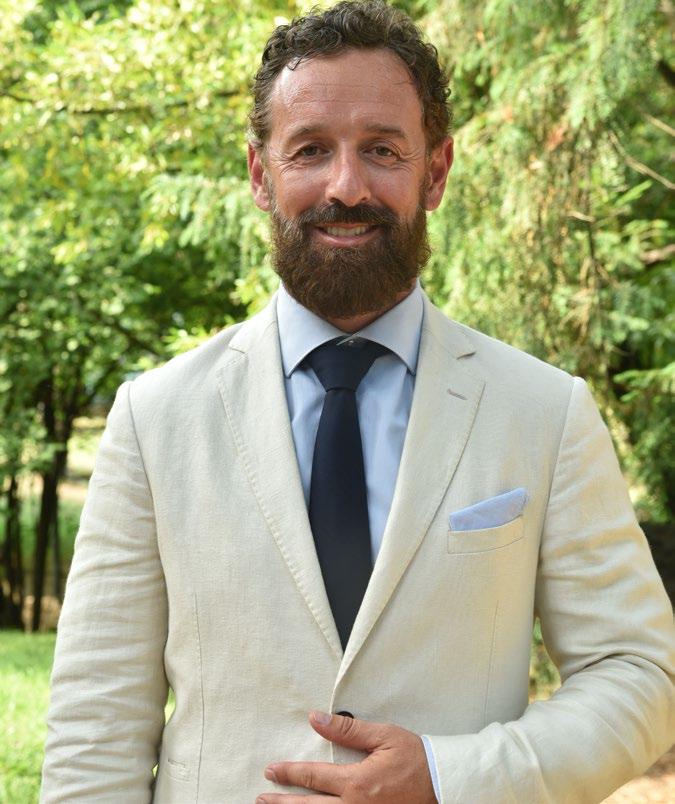
Are blockchain and related cryptocurrencies just commodities for fi-nancial speculators or will they also change the economy? Will they enter our daily lives?
Christian Fazio, one of the founders of the consulting firm Kresius, thinks the answer is yes. We interviewed him.
Is all that glitters gold?
“In the crypto world many companies will go bankrupt, as happened in the 2000s with the Dotcoms, at that time many went bankrupt, but that did not stop Google and company from becoming a world leader, on the contrary. I think that the world of blockchain will substantially enter everyday life. Not only in finance, but also in the real economy.”
How can the economy change?
“The currency we have in our wallets today is a ‘stupid’ currency, which has no added value, except that it is accepted by everyone. It is not traceable, we do not know what it is used for, the central banks put it into
the market, with the aim of increasing the economic fly-wheel, but with less than 30 per cent effectiveness. This globalisation has been done quickly and wildly, also favouring producers from na-tions that do not respect the ethical and economic rules of the demo-cratic and free world. With blockchain currencies, all contracts and transfers will be interconnected and immutable, for the entire supply chain. Crypto could be the tool to regularize the market and penalize those who do not respect global rules.”
What relationship do Switzerland and Ticino have with digital as-sets?
“Switzerland has made a very smart choice. It was the first in Europe to incorporate digital assets into its legal system; this made it possible to open banks that handle both traditional products and cryptocurrency accounts. Two examples are SEBA bank and Sygnum. Zug is home to Ethereum, a major crypto. Lugano with Plan B is part of Switzer-land’s focus on these assets.”
Who to trust in the crypto world?
“ You can rely on a consultant, but always doubt those who only have certainties. In any case, I would say to hold on to 5% of your portfolio for now, then of course you have to assess your risk appetite. You can start by analysing the projects in which the big banks or the big global investment funds have invested, and then go into the specifics of ap-plication.”
Christian Fazio
Profession: wealth manager and consultant
28
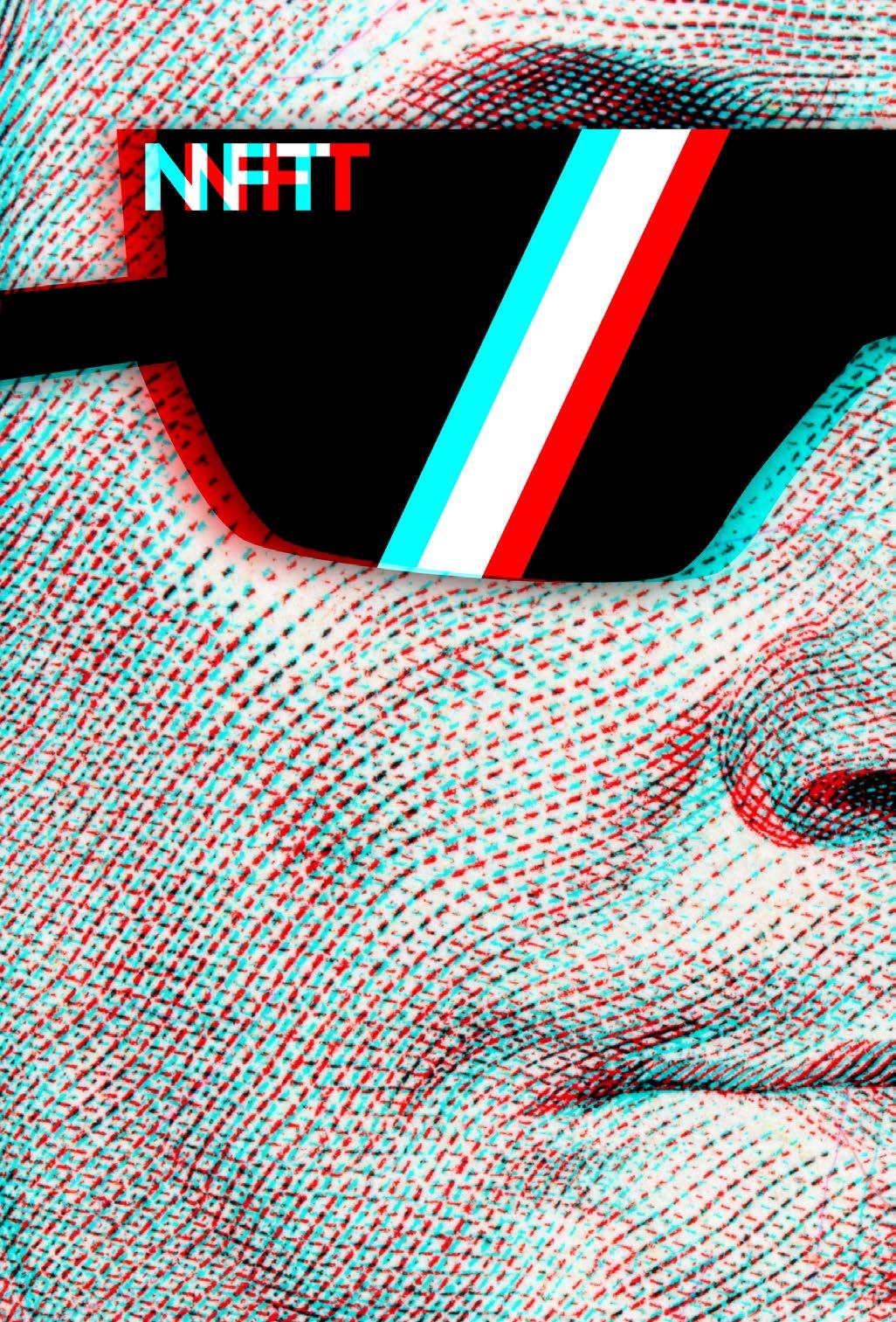
22 02 01
#transport FUTURE IS
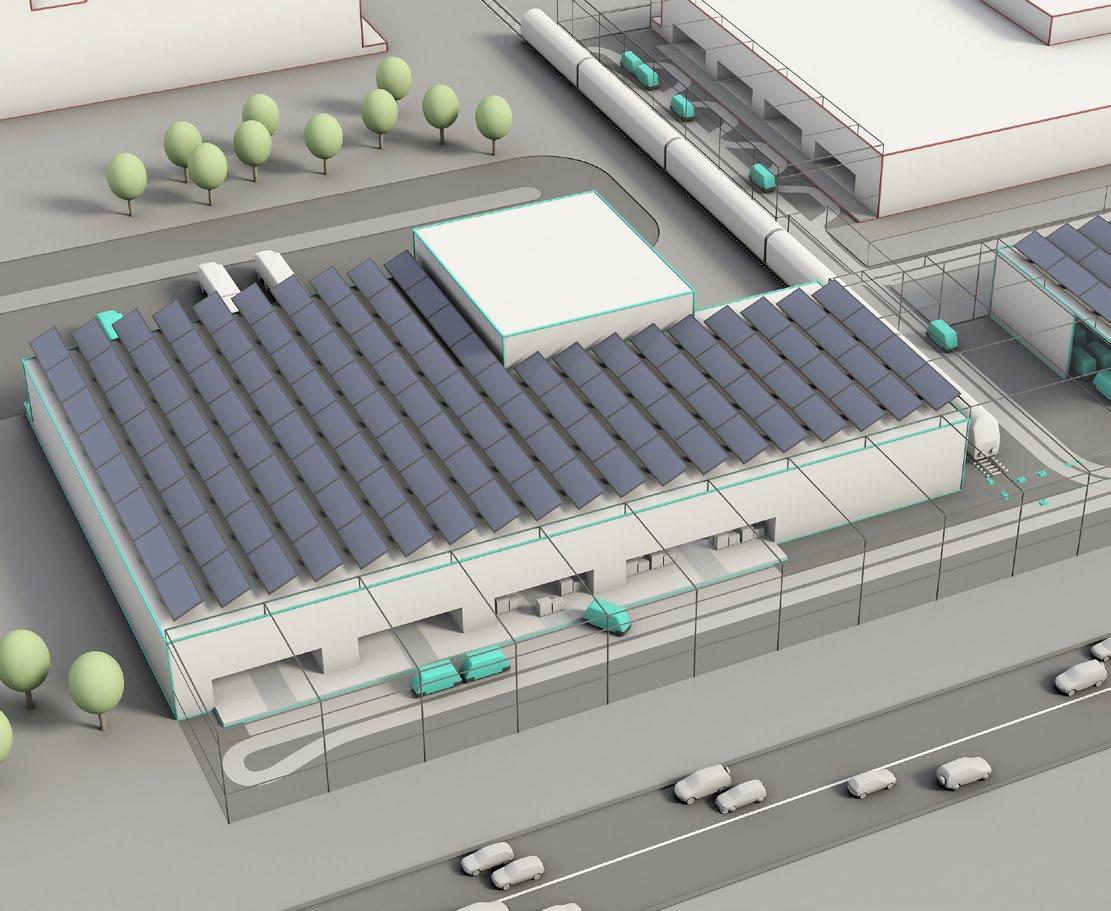
30 Why read this article? To imagine how goods will move in Switzerland in 20 years’ time: automated and underground.
#cargo FREIGHT TRANSPORT, THE
UNDERGROUND
In Switzerland in 20 years’ time, goods will travel along an automated underground metro system from Lake Constance to Lake Geneva. This is what the ‘Cargo sous terrain’ (CST) project envisions and would like to realise. The tunnels will connect production and logistics sites with city centres. Above ground, CST will distribute goods with environmentally friendly vehicles, helping to reduce traffic and noise emissions. 100% of the power to run the system is expected to come from renewable energy sources.
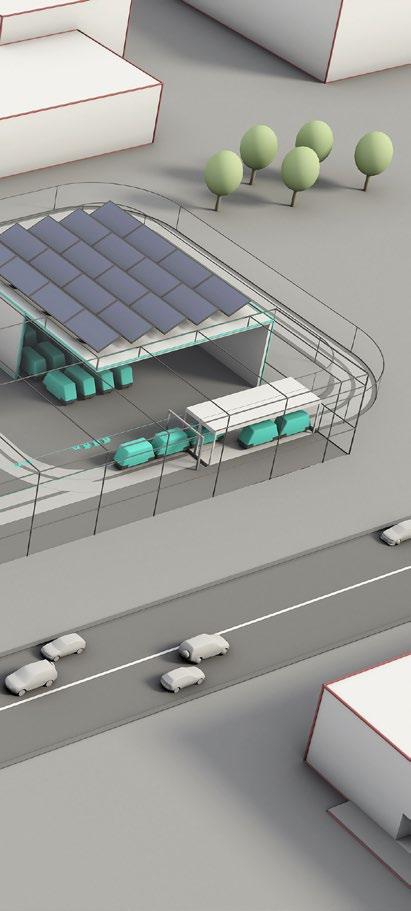
Whether the project becomes a reality will depend on the investment capacity that the shareholders, including many giants from the
Daniel Wiener
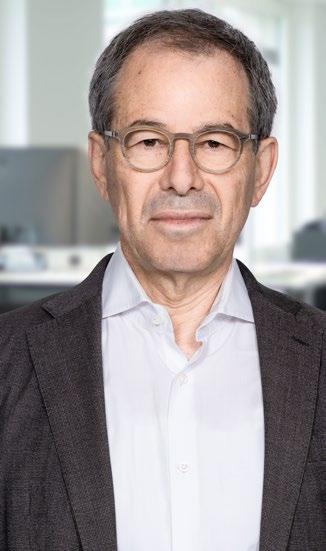
Year of birth: 1953
Profession: economist, cultural manager and journalist
He has been a member of the board of directors and executive committee of Cargo sous terrain (www.cst.ch) for more than ten years, where he is also responsible for project financing as investor relations manager. After decades of entrepreneurial activity at ecos (www. ecos.ch), he now works as a consultant for sustainable development in Basel. An economist, cultural manager and journalist, he is founder and president of the Global Infrastructure Basel Foundation (www.gib-foundation.org). He is co-founder and board member of the UNEP BASE Collaboration Centre. Since 2002, he has supported the financing of sustainable energy solutions in developing and emerging countries (www. energy-base.org ). Daniel Wiener is also President of the Swiss Foundation for Architecture (SAS).
retail, logistics, transport and communications industries, will be able to put in place. The first test will be the construction of the section between the Härkingen-Niederbipp hub and Zurich from 2031.
To innovate also means to see what the world will be like in 20 or 30 years, what the needs will be. To find out how the world of Swiss logistics might change thanks to the CST project (cst.ch), we interviewed Daniel Wiener, member of the board of directors and executive committee of Cargo sous terrain.
22 02
The transformation of the logistics market through Cargo sous terrain is comparable to the transition that has taken place over the past two decades in the telecommunications sector.
What is the objective of Cargo sous terrain?
“The goal is to improve the quality of life throughout Switzerland by significantly relieving motorways, towns and cities of heavy traffic. About one third of the traffic is moved below ground level. The increasing number of parcels and pallets will be transported fully automatically from the sender to the destination.”
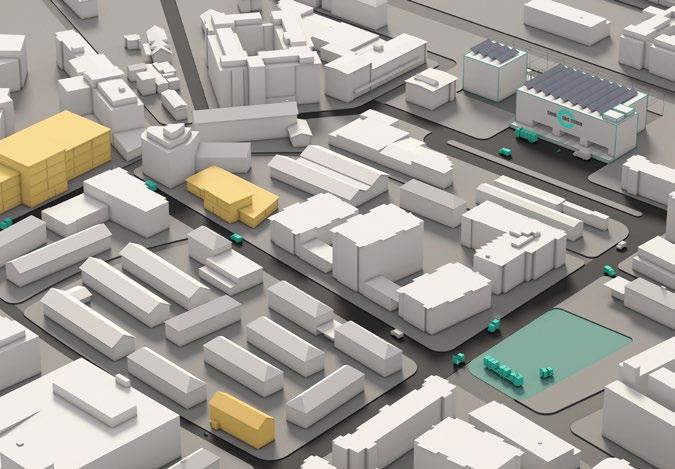
What are the most innovative technological aspects?
“In the hubs, where the goods leave the tunnel to reach the surface, they are already sorted, so that they can be picked up directly and reach their destination by electric vehicles or city-sized transport bicycles. This is thanks to the pre-sorting in the three or four lane tunnel, which serves not only as a transport route but also as a ‘horizontal high-bay warehouse’ located under Switzerland. Predictability of arrival times is crucial because these processes are fully digitised and the prices are attractive for shippers because of the efficiency gains.”
What are the major difficulties to be overcome to achieve this?
“The transformation of the logistics market through Cargo sous terrain is comparable to the transition that has taken place over the past two decades in the telecommunications sector. In the past, when you used to call, we paid per minute or per SMS; today, however, we pay for the
capacity we subscribe to with the telecommunications provider. The distance of the calls or the amount of data transported no longer matters, only the ‘thicknesses’ of the line we use. Thanks to Cargo sous terrain, logistics customers will also benefit in the future from guaranteed fixed prices that exactly match their needs. Cargo sous terrain therefore requires a fundamental rethinking of the market. The example of the telecommunications sector encourages us to believe that this will be possible.”
What are the economic benefits and what are the sustainability benefits?
“As mentioned, all processes, e.g. also transhipment, are automated and digitally controlled. The efficiency gains will lead to savings for customers and better services. In addition, less storage space, less personnel and fewer trucks are required, resulting in cost savings. This makes Cargo sous terrain economical for everyone involved and still sustainable: the system takes up less land. The pressure to expand highways decreases, thus saving cultivated land. There are fewer road repairs, less fine dust, less noise and less CO2 emissions.”
How can Cargo sous terrain integrate with AlpTransit and the cantons not involved in the project?
“This is a central point. Cargo sous terrain serves the whole of Switzerland. Where we don’t have
32
In the hubs, where the goods leave the tunnel to reach the surface, they are already sorted, so that they can be picked up directly and reach their destination by electric vehicles or city-sized transport bicycles
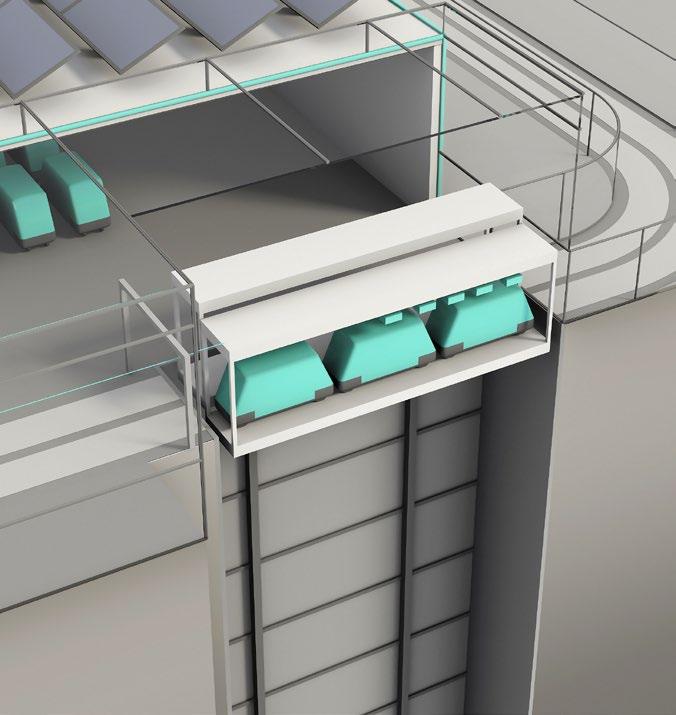
22 02 our own hubs, we work together with the railways so that everything can be handled from a single source, even if different partners provide the actual services in the background. Cargo sous terrain is a collaborative innovation supported by 82 partner companies in the Swiss economy.”
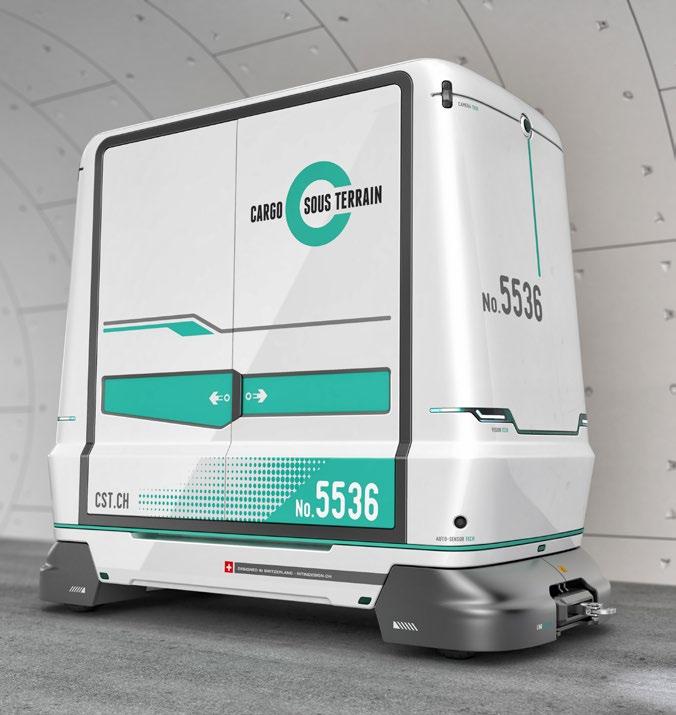
FROM ST. GALLEN TO GENEVA
The project involves 24-hour automatic wagons moving at a speed of 30 km/h along underground tunnels between Lake Constance and Lake Geneva.
What is it for A creare un sistema logistico cittadino con veicoli ecologici per un’efficiente microdistribuzione delle merci. L’obiettivo è alleviare il carico sulle città fino al 30% del traffico di consegna e per il 50% delle emissioni acustiche.
How it works Cargo sous terrain (CST) involves the construction of a three-lane tunnel that will operate 24 hours a day and is intended to connect important logistics centres in the Highlands. The goods, transported at a speed of 30 kilometres per hour, will be entered and withdrawn in a fully automated manner via shafts equipped with hoists.”
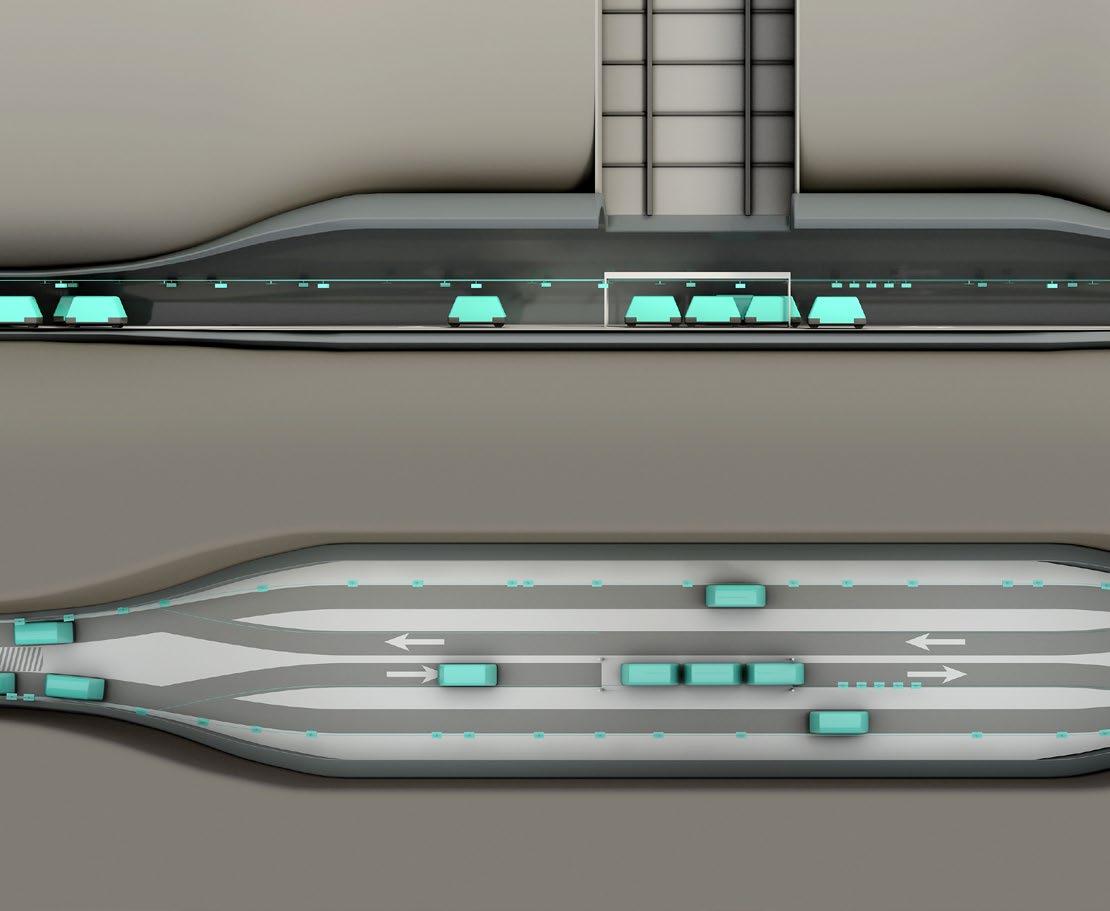
34
The first section
The first section of the Cargo sous land network will run from Härkingen-Niederbipp to Zurich and will be approximately 70 kilometres long. Expansion to other key logistics and distribution centres in Switzerland will continue until 2045, creating a total network of 500 kilometres between Lake Constance and Lake Geneva, with branches to Basel, Lucerne and Thun. The total cost of building the first section, including software, hubs and underground and ground vehicles (for distribution in the cities) is estimated at CHF 3 billion.
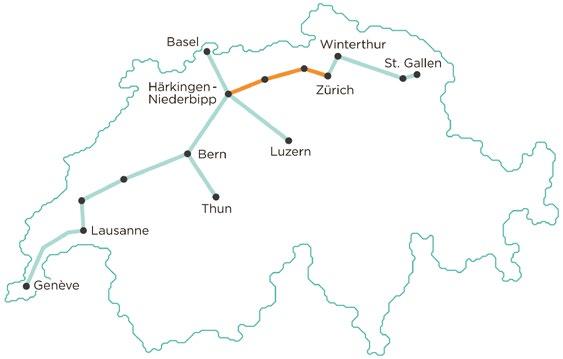
Financing
The total project costs are in the order of CHF 30-35 billion. The Federal Chambers of Parliament last year passed the law that defines the legal framework for the construction and operation of CST. The project is expected to cost 30-35 billion, but will be financed entirely by private investors. CST’s shareholders include SBB Cargo, Swisscom, Swiss Post, Migros, Coop and ZurichKloten Airport.
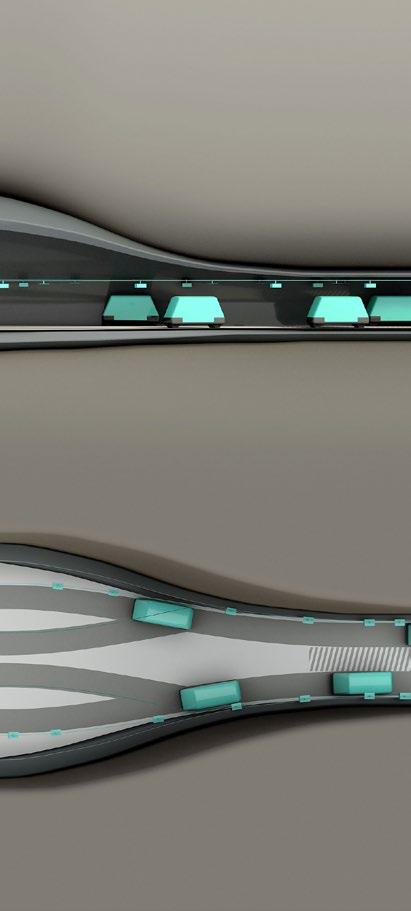
22 02

36 ON THE SADDLE WITH THE EMIRATES
Year of birth: 1964 Profession: Team Principal and CEO UAE Team Emirates
He was a professional cyclist from 1986 to 2002 and was a silver medalist at the 1996 World Championships in Lugano (the city where he was born). In 2017 he was the mediator between the former Lampre team and the new UAE management. He’s Team Principal and CEO of UAE Team Emirates.
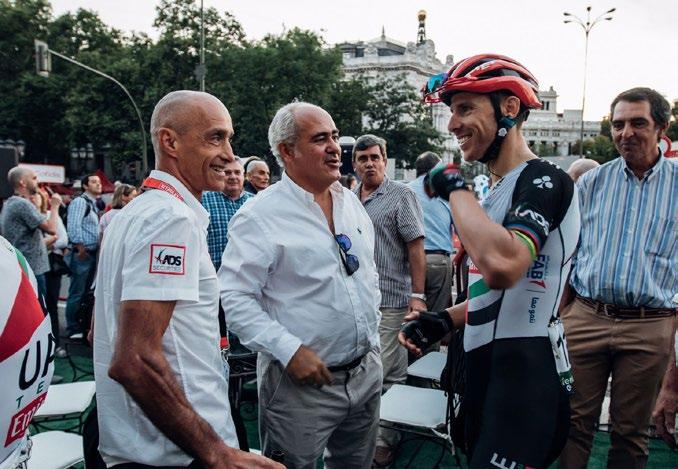
Dubai and Abu Dhabi are two examples of cities that have grown rapidly in recent years, with impressive buildings, not only in terms of height (Dubai is home to the Burj Khalifa, the world’s tallest skyscraper: 828 metres) but also for the technological solutions adopted. For the future, the United Arab Emirates also want to combine urban development with the quest for sustainability: creation of parks, nature reserves, green lungs, biodiversity. A demanding challenge, considering that the population is destined to grow even further, and it will be necessary to ensure easy interconnections, eco-friendly transport and cutting-edge, ultrafast technological infrastructures capable of satisfying digital nomads, increasingly demanding tourists and a population that desires a contemporary lifestyle.
Cycling is playing an important role in this direction. In recent years, both new and former neighborhoods have seen the creation of cycle paths. Cycling is seen as a healthy and environmentally friendly practice to be encouraged. To communicate this message and push people even more into the saddle, 2017 saw the birth of UAE Team Emirates, the country’s first professional cycling team, which in the space of a few years has managed to become one of the strongest international formations, creating a ‘pull’ effect on the population that identifies with the successes of the national colours.
To talk to us about innovation through pedals, we interviewed the president and CEO of UAE Team Emirates.
Mauro Gianetti
37 22 02
Why read this article? To see how a sport can change the face of cities, even in the desert. And how a cycling super-team is born. #cycling #sport #emirati
A sports enthusiast, he is the first president of the UAE’s first professional cycling team. He is active in several real estate and construction groups in several countries in the Middle East, Africa, Asia, Europe and the Americas.
What has been your approach to cycling?
“We think cycling should be for everyone: children, young people, the elderly, for families. It is a healthy sport that promotes a healthy lifestyle, and it is a type of exercise that is suitable for everyone.”
Have you invested in facilitating cycling?
“In Abu Dhabi, we made sure there were all the facilities and everything
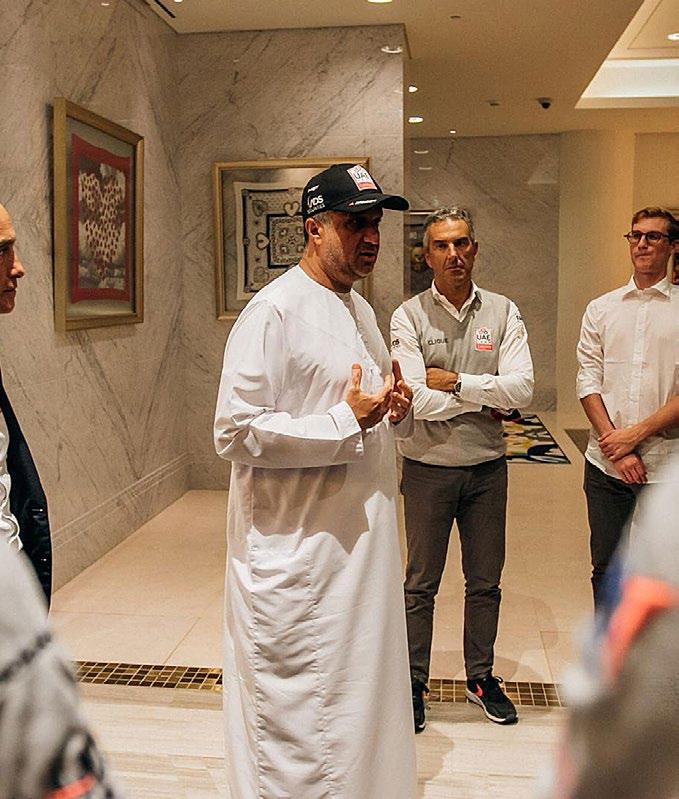
you need to do good cycling, safely, but also offering opportunities for entertainment, in the sense of fully enjoying the sport of cycling.”
Are there different routes?
“Yes, in Abu Dhabi there is everything you need, there are wonderful undulating routes, both for off road and road cycling.”
Has the team served to encourage cycling?
“There is great interest in Team Emirates. We started 6 or 7 years ago and we are continuing to grow. To do this we provide the best facilities and offer support in everything to achieve new results. This leads to promoting the vision of cycling as a healthy sport.”
The successes have come. The secret?
“In the beginning, the results were not immediately good, then we gradually worked on the team. Today we have achieved very good results, with which we are very satisfied. This was possible thanks to the champions who joined the team and to having invested in promising young people.”
If a team already on the professional circuit like the former Lampre has been able to continue its activities under the colours of the UAE, great credit goes to Mauro Gianetti, a former professional cyclist, coach, and then mediator in creating the new cycling association on the shores of the Persian Gulf.
What differences in approach to innovation between the Emirates and Switzerland, and more generally the European world, have you found?
“Cycling is a very good example to understand the mentality with which people think about innovation in the Emirates. They discovered cycling six or seven years ago, but once they realized its value and decided to invest in it, they accelerated. This is their typical approach, if
Matar Suhail Al Yabhoiuni Al Dhaheri
Year of birth: 1965
Profession: Businessman and President UAE Team Emirates
38 Matar Suhail Al Yabhoiuni Al Dhaheri is a businessman who invests and directs in numerous companies, but he is also a sports enthusiast and the first president of UAE Team Emirates.
something new is needed, then it has to take priority. So, they invested immediately in new routes for slow mobility because it means promoting health and well-being and reducing traffic and pollution. New residential neighborhoods are already being created with child-friendly paths, and even existing ones are seeing changes to accommodate cycle paths.”
So, the team came later?
“Yes, the aim is to promote health and well-being through sport. The team was a consequence, a tool that acted as a vector and amplifier.”
When you achieve prestigious successes in a short time, how do you continue to motivate athletes to improve?
“We have the goal of being the best team in the world and it is important to share this vision with all the staff. Emirates wants excellence in everything they do. Everyone has to give their best.”
What has changed in cycling in recent years?
“In the last 15-20 years it has become a global sport. Before it was a European phenomenon with a few Americans and Colombians. Now talent is born in Australia, in Africa, in China. The bike industry has increased sales tenfold in ten years. The Tour de France and Giro d’Italia are followed live from 190 countries. Of course, it will be increasingly difficult to find great talent in Europe and the level is so high that even if you have the best rider in the world you have to make choices. He can’t do every race even if he could win them all.”
The land of seven emirates
The United Arab Emirates (UAE) is a state located in the south-east of the Arabian Peninsula and overlooking the Persian Gulf. It consists of seven emirates: Abu Dhabi, Ajman, Dubai, Fujairah, Ras al-Khaimah, Sharjah and Umm al-Quwain. The capital is Abu Dhabi and the population of the UAE is about 10 million inhabitants (more than a million more than in Switzerland) spread over an area of 83,000 square kilometres (double that of Switzerland). The GDP per capita in 2021 was about 43,000 dollars (half that of Switzerland). The official currency is the Dirham.

39 22 02
Why read this article?
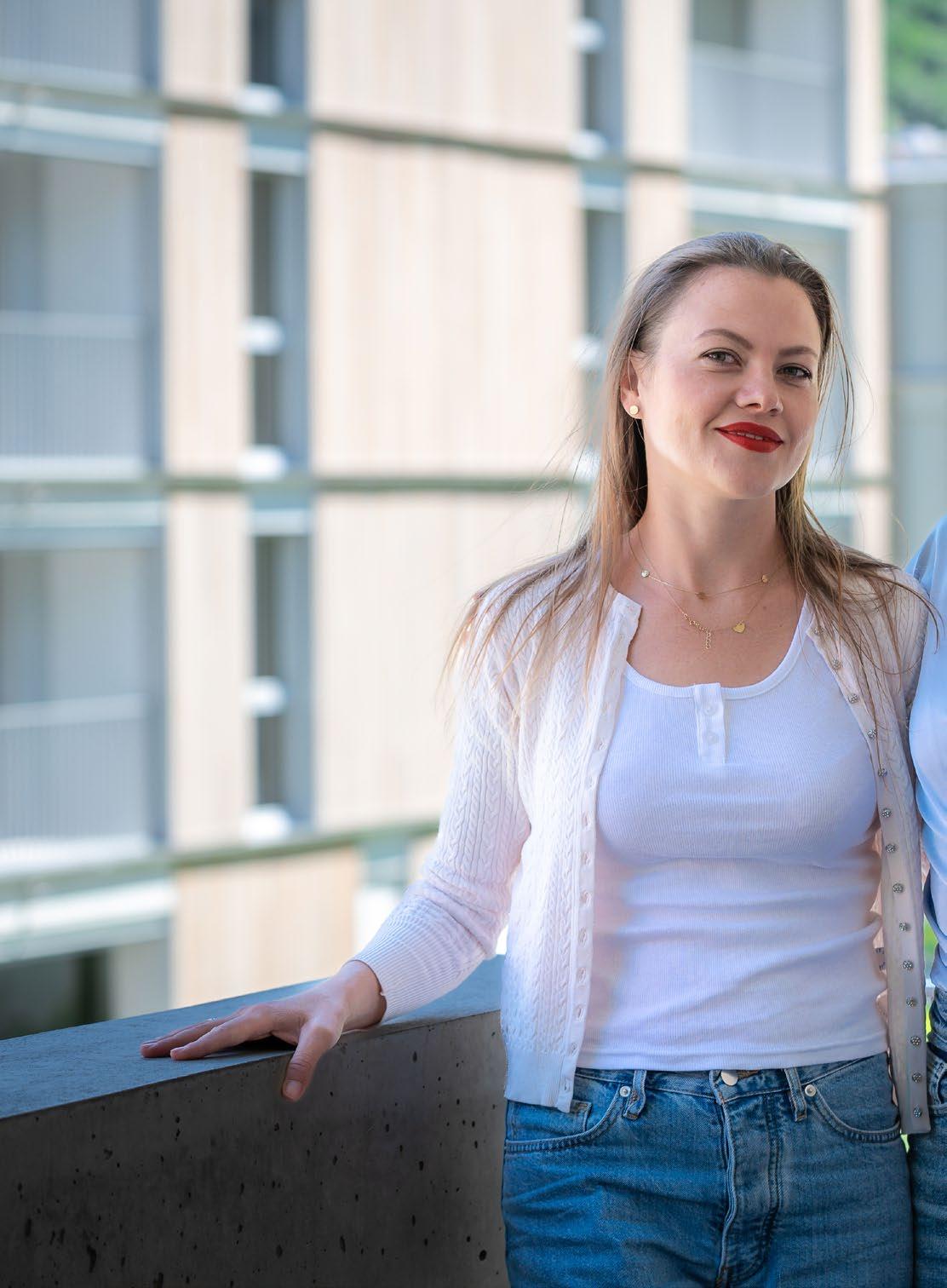
To find out how fate works without our knowledge. To understand how those who left their country and their husband live in the winds of war.
#ukraine REDISCOVERED
40
THE
FRIEND
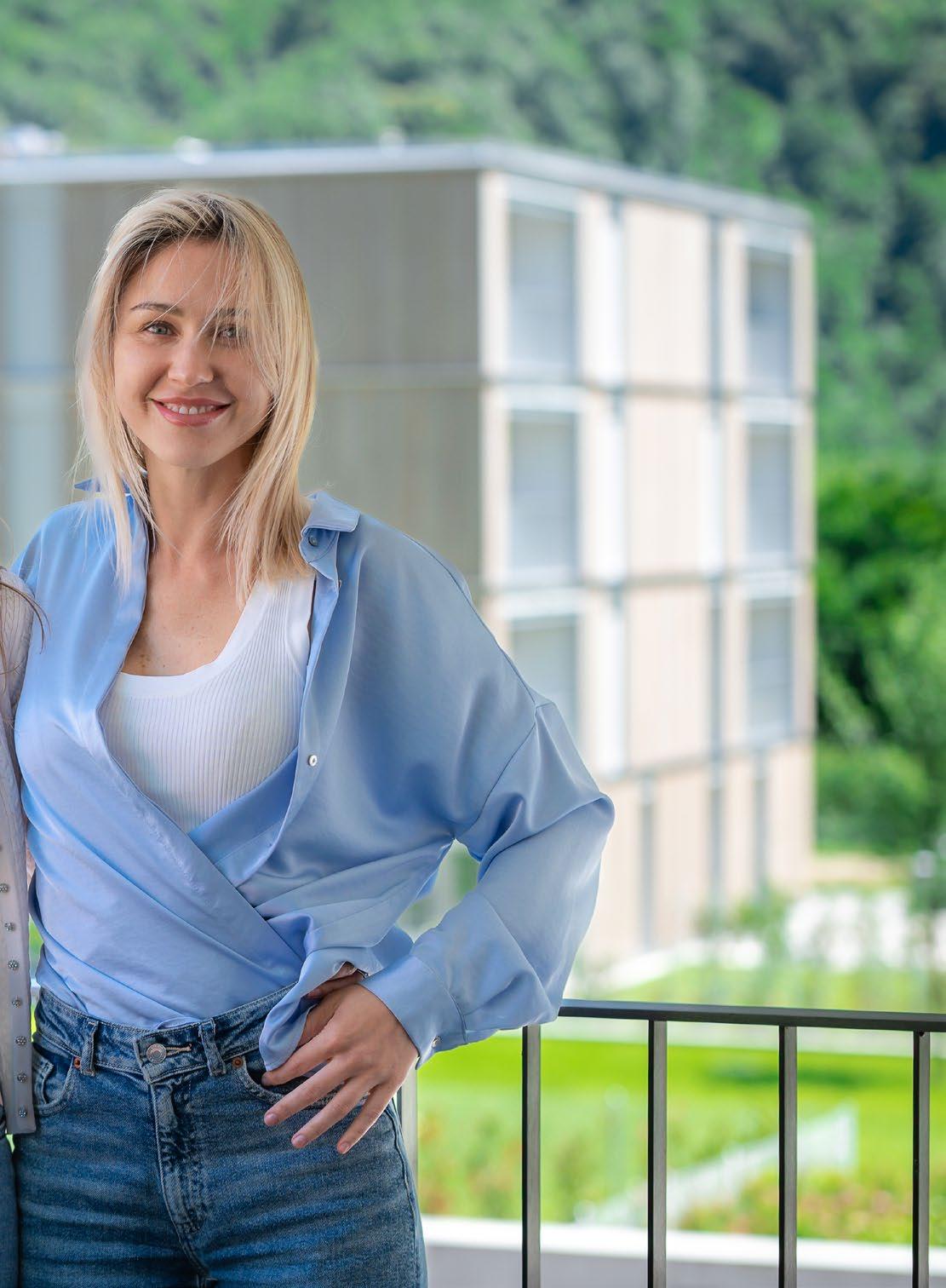
22 02
Year of birth: 1986
Profession: Civil Engineer
She grew up in Kryvyi Rih, the longest city in Europe. She graduated from the National Technical University with a degree in civil engineering. She met her husband at universi-ty and got married after graduation. They have two children: Platon (7 years) and Eva (8 months). After college she worked for several years as a design engineer, but then she developed into the consulting field.
They had been classmates in middle school, then the paths of their lives diverged. One had stayed in the city, the other had moved 360 kilometres away. For over twenty years, they had not seen each other again. In the spring of this year, they found each other by chance 2,000 km from their homes in Switzerland. Had they been on holiday, we could speak of a curious anecdote, but their journey to the Swiss Confederation was not one of pleasure. They are Alona and Tetiana, they have their children with them and left their husbands in Ukraine. They have fled the war.
We interviewed them to understand what it means to see everyday certainties dissolved overnight.
When did you arrive in Switzerland?
Tetiana: “On 24th of February after the first bombings, I decided to take my two daugh-ters and my mother and we reached Hungary. From there we flew to Switzerland at the be-ginning of March. My husband stayed in Ukraine, all males between 18 and 60 must stay there to defend the country.”
Alona: “I arrived in Switzerland on 2nd of April, after a car journey through Eastern Europe. With me were my two children, one of them a
few months old, my sister Irina and my sis-ter-in-law. Our husbands also stayed in Ukraine.”
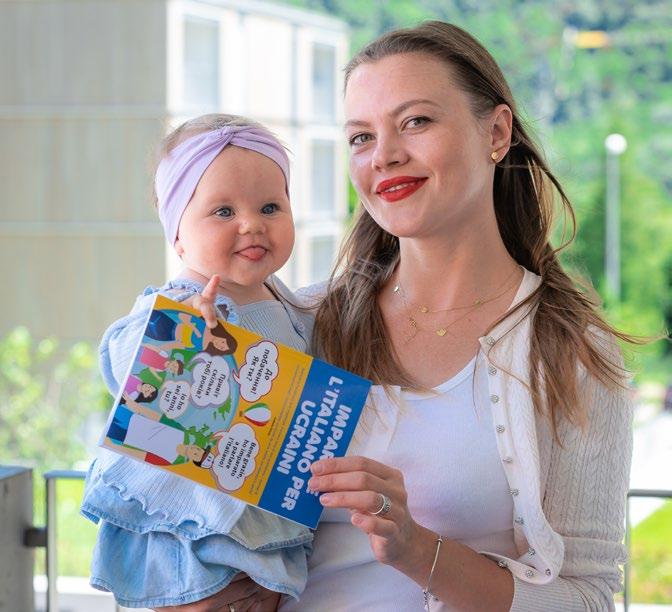
How did you find accommodation?
Tetiana: “I already knew the Lugano area because I have Italian friends who live there. I love Italian culture very much and I had studied a bit of Italian at university, so I can speak it well enough. I also studied as a translator, but in Ukraine I worked in a beauty salon. An-yway, a volunteer called Olga put me in touch with Andrea Galli, telling me that he was providing accommodation for Ukrainian refugees and so I found myself in Roveredo.”
Alona: “Through the volunteers who look after us Ukrainians in Switzerland, after an ini-tial makeshift accommodation, I found accommodation in Giubiasco thanks to Andrea Galli. For us it is a very good solution, we have adequate space as we are three families with children.”
You already knew each other but hadn’t seen each other for decades. How did you meet and recognise each other?
Tetiana: “We were both from Kryvyj Rih, a town in southern Ukraine and had been classmates in secondary school. Then I had chosen to continue my studies in Kharkiv, which is in the east, close to the Russian border. So the last time we saw each other we were about 12 years old and it has been 22 years. After arriving in Switzerland, one day Andrea Galli tells me to accompany him to meet the new Ukrainian families housed in his accommodation, in case we need to speak Ukrainian or Russian. We arrive in Giubiasco and meet Irina, Alona’s younger sister.”
Alona: “I had gone to the supermarket. When I came back, we started talking to each other. We told each other our first and last names, where we were from, and we knew that we had been schoolmates when we were teenagers.”
Besides your affections, what do you miss most about Ukraine?
Tetiana: “Well, I used to work in a beauty salon and it was no problem to get a manicure or a beauty
Alona Balashova
42
treatment, here on the other hand taking care of the aesthetic side is very expensive.”
Alona: “I only miss my husband. There are videocalls, but I wish we were together, espe-cially to see our daughter grow up. She’s only a few months old.”
Did you expect the Russian attack?
Tetiana: “No, we couldn’t believe it. Friends from Europe and America in the days and months before called me alarmed, but what is going to happen, they asked me. They seemed to be exaggerating. Instead...”
Alona: “Yes, it’s true, it was hard to believe it could happen.”
How do you imagine your future?
Tetiana: “It’s difficult. Even if there is a truce or peace, there will still be a broken country. Our cities were not occupied by the Russians, but they were bombed, some people lived for days in the underground. In any case, as long as husbands are forced to stay in Ukraine, it’s difficult to make choices.”
Alona: “Yes, everything is still too uncertain now. My husband works in construction. I too trained as a civil engineer, although I then worked in consulting services. Some eco-nomic sectors are blocked, as long as there are bombings it is difficult to think about the future.”
How are you settling in Switzerland?
Tetiana: “The welcome has been fantastic. We have found people with hearts of gold. Everyone is doing so much for us. It’s really incredible the solidarity we’ve found.”
Alona: “Tetiana already speaks Italian. I don’t. But thanks to Letizia, Andrea Galli’s sister, Italian courses have been organized at the Bistrôt in Grono. There are about ten Ukrainian families from the area taking part.”
The interview comes to an end. Alona takes her leave, Tetiana says goodbye and calls her youngest daughter: Ariana. She is four years old, big sparkling eyes and keeps repeating the name of the Minnie
doll she is holding. Sometimes you don’t need big speeches to know what is right, all it takes is the encounter with the gaze of an innocent.
Was born in Kryvyj Rih, Ukraine, after high school graduation moved to Kharkiv where have lived half of her life. Completed the master’s degree in studying the foreign lan-guages (English and Italian), got married and had two daughters.
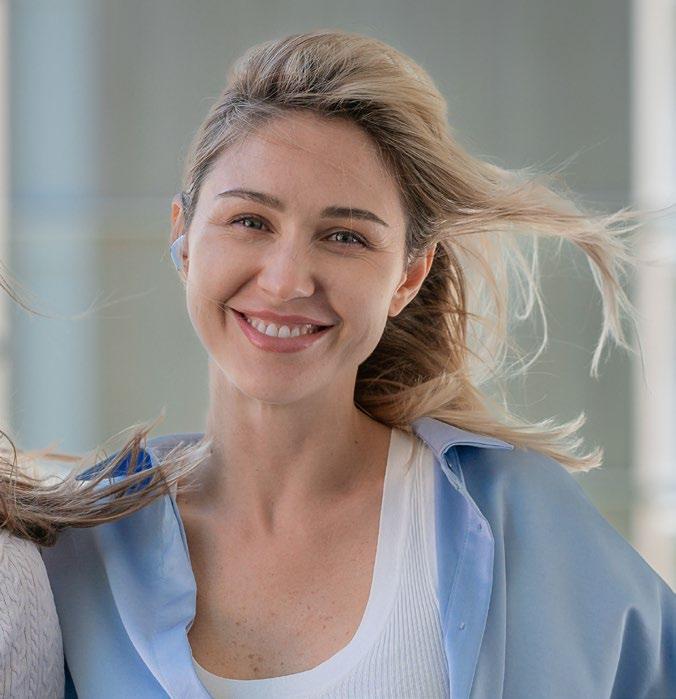 Tetiana Kotenko
Year of birth: 1987 Profession: Beautician
Tetiana Kotenko
Year of birth: 1987 Profession: Beautician
43 22 02
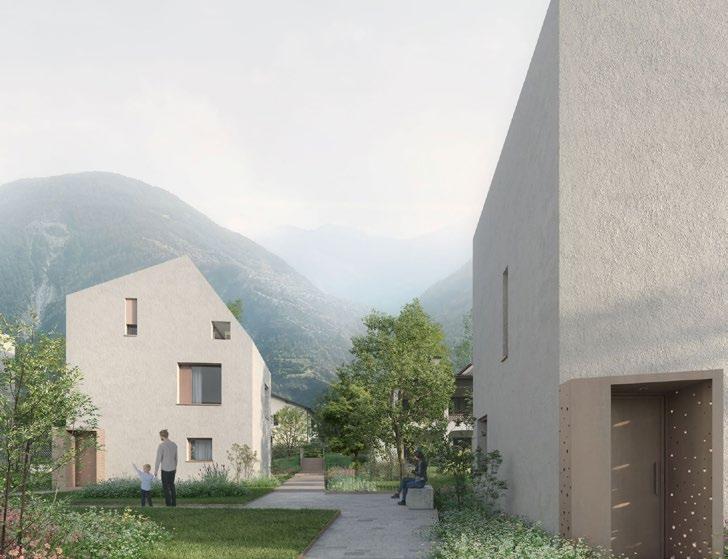
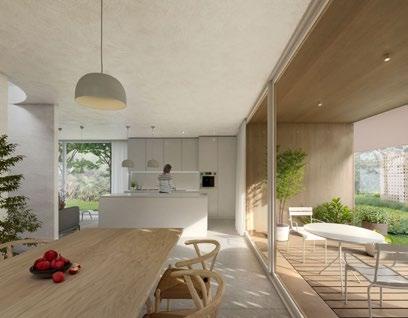
Info:+41918274036 immogal.ch Roveredo (GR) TheAmaryllisneighborhoodwillcomprise 8detachedsingle-familyhomes. Thelivingspacescombinedwithsimple butmodernarchitecturewillallowyou tofindanidealhousingsolution. Construction begins Autumn 2022Wehave beautiful villastobuy

End— #vinibistrot #durigutti #malbec #carmenere #vik #lapiubelle #millacala #cabernetfranc#cabernetsauvignon #merlot #lascompuertas #rebula #tritonlex #malvazija worldwidewine.ch Visit our online shop, scan the QR-code!
